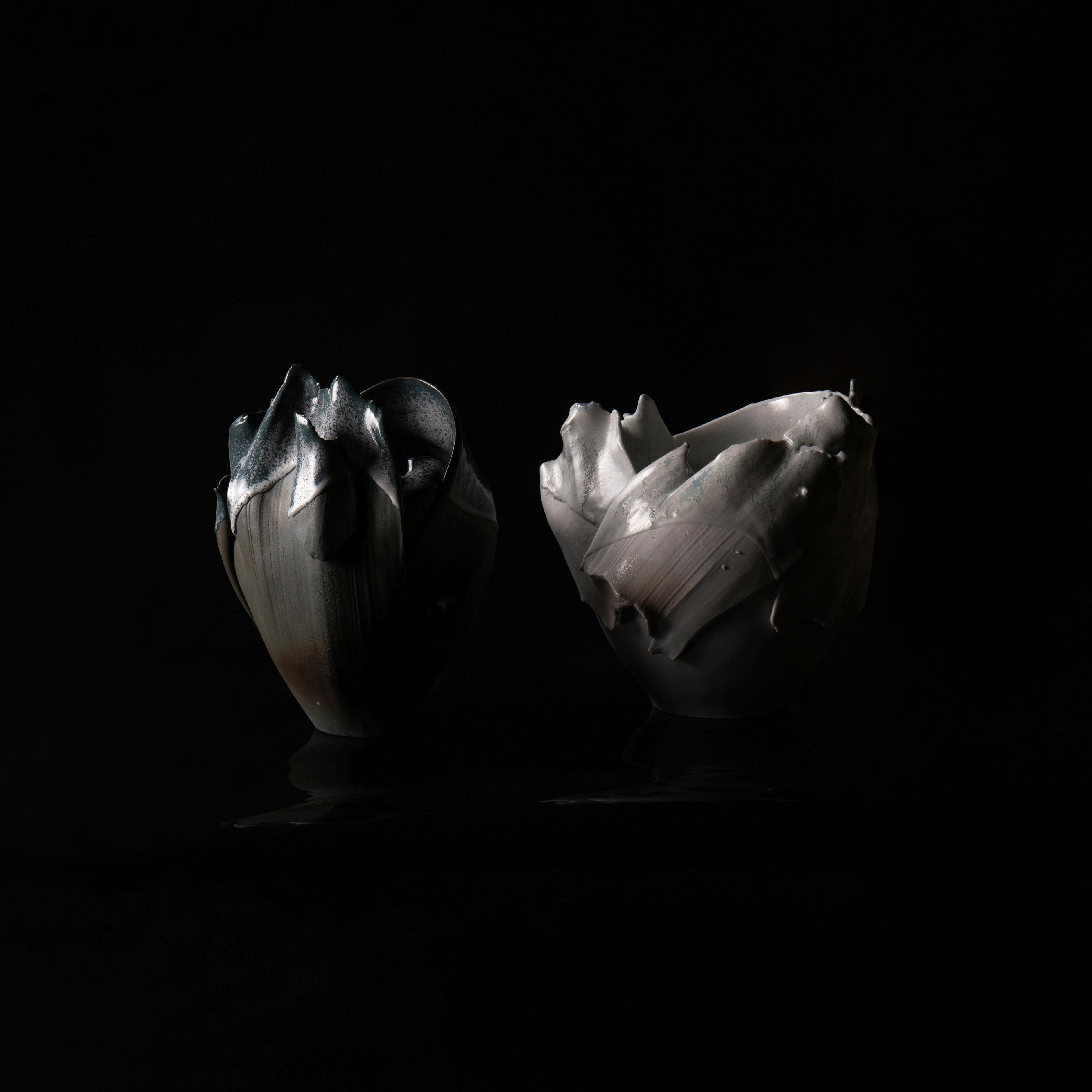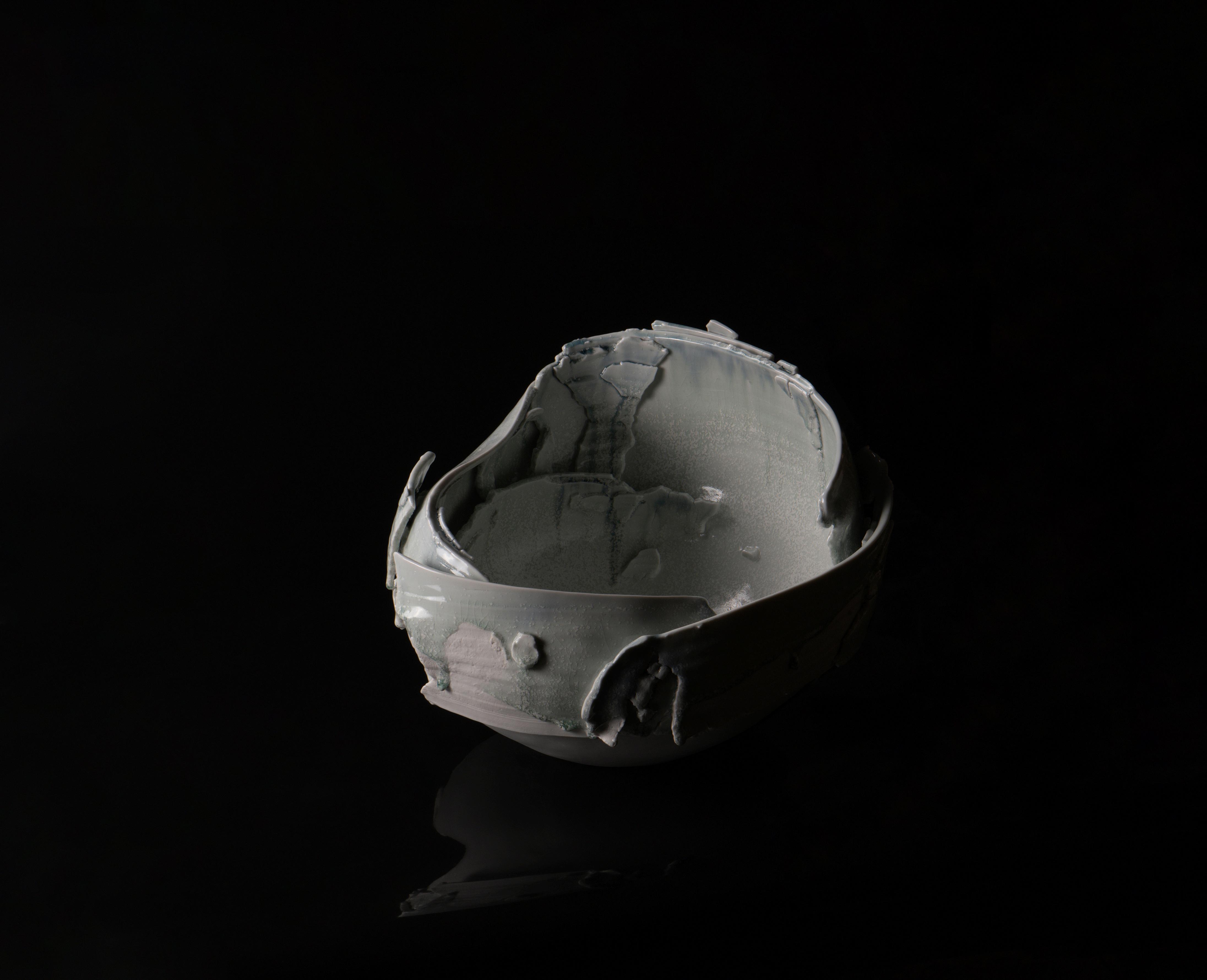

SILENT EARTH
CONTEMPORARY CERAMICS BY KATO MAMI
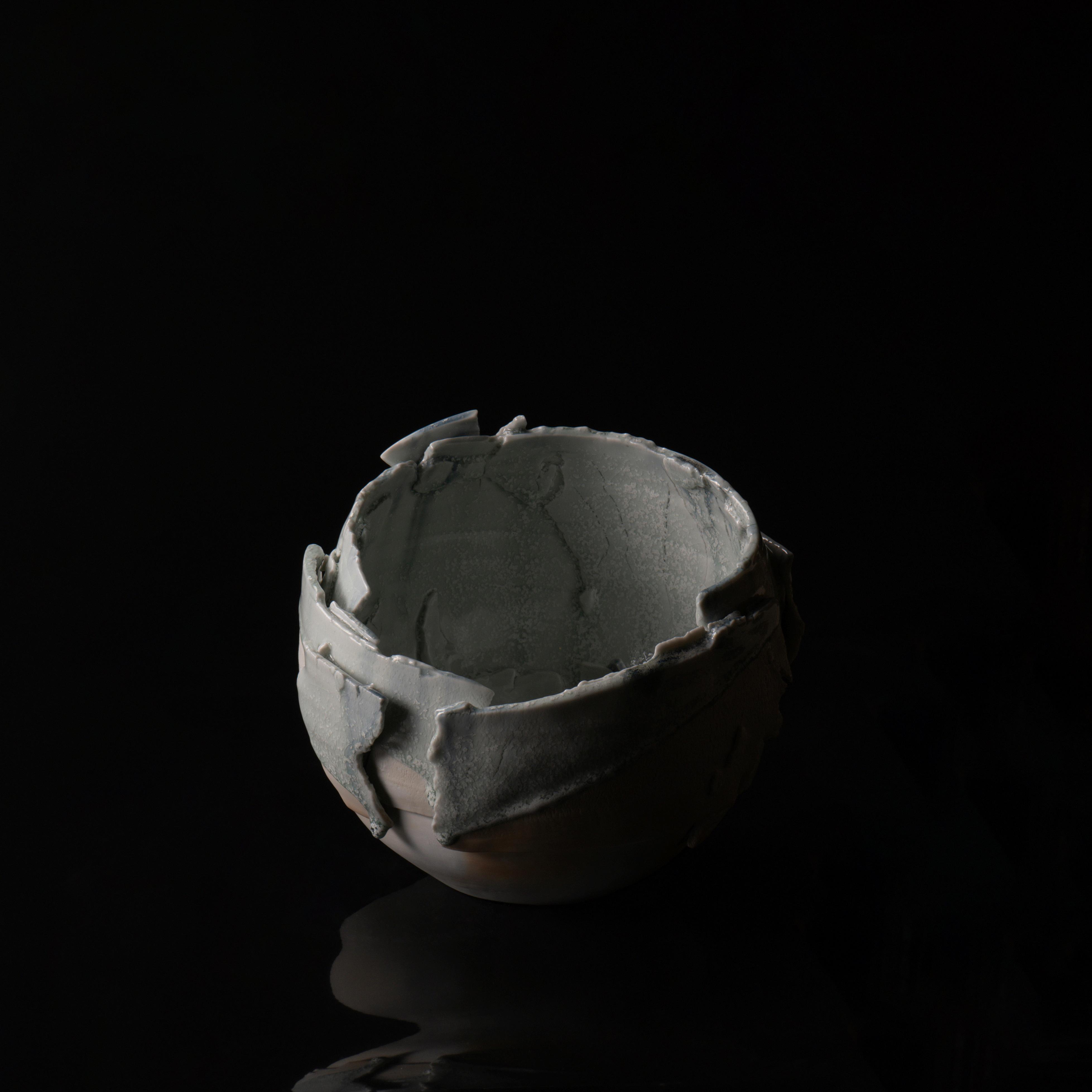
Dai Ichi Arts, Ltd is a fine art gallery exclusively dedicated to celebrating modern and contemporary works of ceramic art from Japan
Since our inception in 1989, we have focused on placing important Japanese ceramics at the center of New York’s contemporary art scene. The gallery has introduced pieces to the permanent collections of several major museums, including The Metropolitan Museum of Art, The Art Institute of Chicago, the Minneapolis Institute of Art, the Indianapolis Museum of Art, the Princeton University Art Museum, and many more
We are committed to providing authoritative expertise to collectors, liaising with artists, and showcasing inspiring exhibitions and artworks. We welcome you to contact us for more information.
Silent Earth: Contemporary ceramics by Kato Mami
Exhibition catalog
On view: October 23 - November 6, 2025
18 East 64th Street, Ste. 1F
New York, NY, 10065, USA wwwdaiichiartscom

NOTE FROM THE DIRECTOR
BEATRICE CHANG
It is with great pride and joy that Dai Ichi Arts presents the first ever New York solo exhibition of Kato Mami, an artist from Aichi whose vision has expanded the possibilities of porcelain. While her many awards in Japan testify to her originality and strength, what resonates most deeply in her work is not the record of her achievements, but the spirit of empathy that she shapes into form.
Preparing this exhibition has itself been a creative journey, one that reflects the very qualities Kato embodies: tenacity, imagination, and humanity. Working with porcelain slabs by draping, folding, and layering them into sculptural vessels, she builds not only physical forms but also spaces of memory and connection Her vessels, made of porcelain clay sourced in Seto and Jingdezhen, expand into dreamlike terrains. At the same time, they evoke stark and desolate yet beautiful vistas where humanity bear collective witness to the raw power of nature. She reminds us that the wind, sand, moon, sky, sun, and the ceaseless movement of tides subsist without language: a silent earth.
A dear friend of the gallery, the curator and Japanese specialist Daniel McOwan, recently wrote: “There is little doubt that Japanese ceramics will go down in history as one of the great traditions of ceramic making. ” Within this great tradition, vessel art has long moved my heart in profound ways, and I have found Kato’s vessels especially powerful. In her search for acceptance and forgiveness, she has created works that seem to receive each viewer. Within their open space, one’s identity converges, and the vessel becomes a sanctuary: an intimate site of healing, whether through a tea bowl, sake cup, or a larger sculptural form

Kato’s art is a result of deep introspection and personal inquiry It is precisely this quality of selfawareness that infuses her work with the ability to embrace community and affirm a poignant humanist vision. The sense of empathy and wonder in her work is not a coincidence. Years of consistent, patient labor are behind her practice. Layers of clay are gently draped and built upon one another, giving each vessel depth and dimension. To unify concept and form successfully and seamlessly is no easy feat, and I applaud and admire Kato for her dedication to her craft.
This exhibition also reflects the many minds who helped bring it to fruition Curators, critics, patrons and fellow artists in Japan have long recognized Kato’s originality, and it is our honor to share her work with New York audiences for the first time. I am grateful to the Dai Ichi Arts team for their dedication and creativity in this project. They have channeled qualities that mirror the spirit of Kato’s vessels.
We hope that this exhibition will not only celebrate the milestones of an exceptional artist but also offer each of us a sanctuary: a space of presence, feeling, and human connection.
Beatrice Chang, October
2025
What is a vessel?
To consider the ceramic vessel is to contemplate its spatial interior For Tokoname-based ceramic artist Kato Mami 加藤 真美 (b 1963), the interior of a vessel is not simply an empty void for containment, but a space that constitutes its basic essence. Interior and exterior coexist, forming a site that mediates the relationship between human and object (vessel). This is a function Kato regards as a fundamental theme in all vessels: “I was captivated by the inside of everyday vessels: how they receive, wrap, and hold,” Kato reflects, “It is not just empty space, but a space filled with a kind of presence, like a soul ”
For Kato, this philosophy of interior presence also extends outward into form: the vessel’s “soul” finds further expression in textures and surfaces that invoke potent themes from the natural world. Working primarily with sheets of porcelain clay, Kato constructs sculptural forms that echo glacial terrains, quarried mountains, or oceanic tides. Her process is defined by formal tensions between sharpness and softness Delicate slabs and ribbons of porcelain clay are layered, folded, and draped to achieve structure while still retaining organic fluidity Under shifting light, the surfaces of her works comprise crystalline tones and dramatic, angular shadows that impart an ethereal impression on the viewer. Subtly iridescent glazes, in pale greens and blues, emerge through the matrix like glacial melt over porcelain, recalling distant and celestial terrains. The making is meticulous: hand-building, painting, glazing, drying, before finally firing in a gas kiln.
The thematic sensitivity to form and containment in vessels finds one of its most poignant expressions in Kato’s celebrated chawan (tea bowls), among the most beloved vessel forms in Japanese ceramics. In her chawan, she translates vast imagined landscapes– constructed from a meticulous system of draping clay sheets over one another– into the intimate scale of human hands. By compressing landscapes into the intimate scale of tea bowl proportions, Kato transforms its mikomi (⾒込み; a term that refers to the interior space of a tea bowl among its other meanings) into more than just a container for tea Interior space becomes a site of convergence where, in the hands of the beholder, imagination completes the vessel itself. Here, the question returns with new force: what constitutes a vessel?
In 2014 and 2024, Kato made history as the first woman to win the The Shōroku Award Chawan Exhibition (renamed to the Mino Chawan Exhibition in 2015) This was a turning point in both her career and the broader landscape of Japanese ceramics
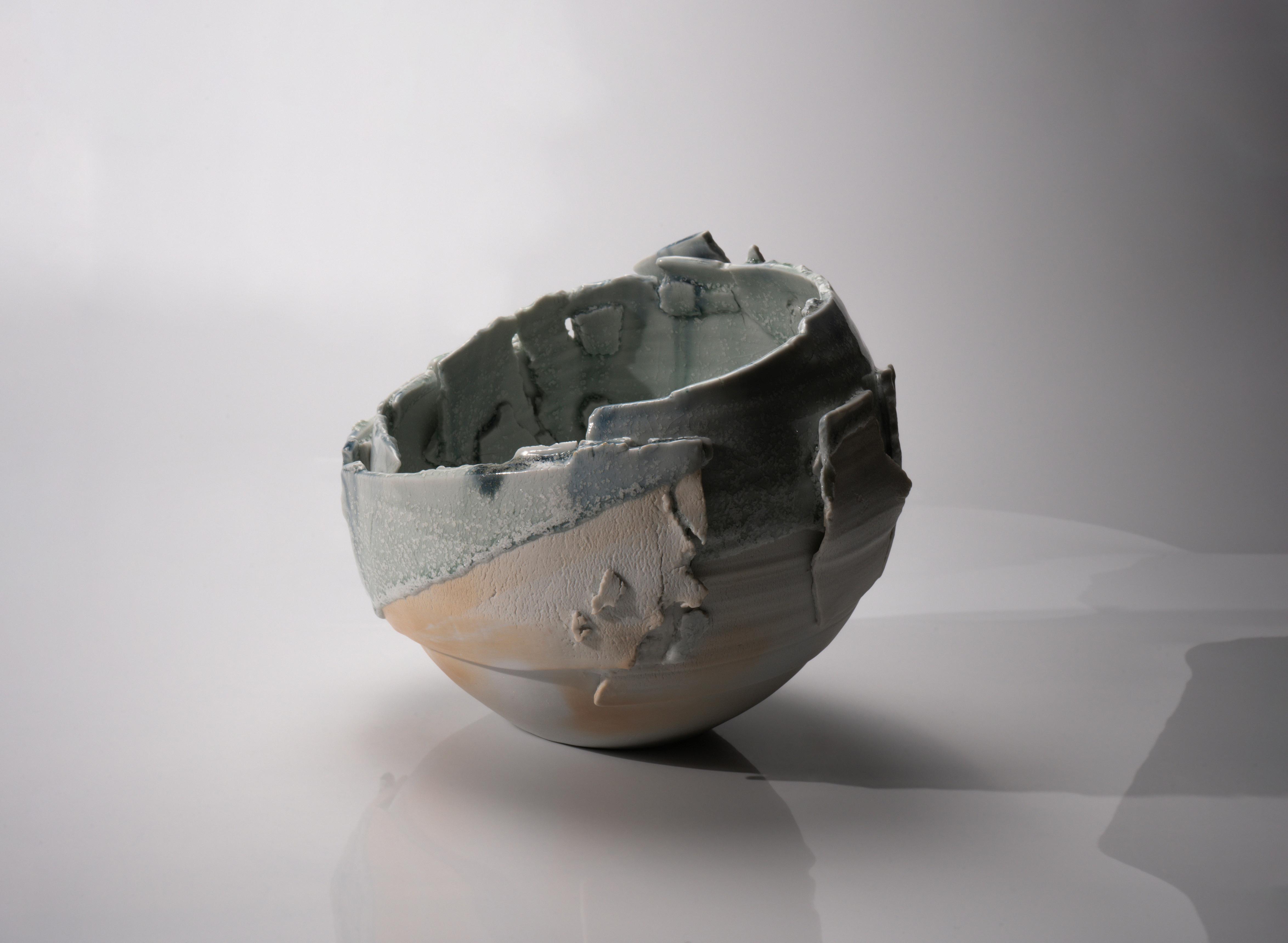

Kato Mami at the acceptance ceremony of the 2024 Mino Chawan Competition, where she was awarded the grand prize

About the winning tea bowl, Kenji Kaneko (concurrently the Director of Bizen City Art Museum, Tōshin Mino Ceramic Art Museum, and the Ibaraki Ceramic Art Museum) who served as a panel judge, remarked:
“This tea bowl was formed by draping a slab of clay over a mountain-shaped plaster mold. Where the slabs overlap on the body, they are slightly misaligned and crimped, creating a distinctive nuance unique to the artist. These subtle distortions lay bare the internal structure of the vessel, posing the question: What is a vessel? In this way, the artist imbues the work with a deeply personal reflection It becomes, in a sense, a space through which the self is released ”
Following this milestone, among several other accomplishments, her work received the Grand Prize at the 22nd Japan Ceramic Art Exhibition in 2021, where the jury noted how the surface of her ceramics, which resembled crackled icy frost in color and form, still radiated a presence of warmth from within. The winning vessel was inviting, beckoning viewers to look inside through various systems of undulating curves that guided the eye towards the centre of the piece This abstract duality, between coldness and vitality; structural and organic, are expressed throughout her oeuvre.
Over time, Kato’s vessel forms have continued to evolve. She meditates upon how vessels outwardly connect and communicate with subjects and viewers. Her recent works establish a dialogue between nature and vessel, between physical form and emotional resonance In 2024, she was nominated for the prestigious Paramita Ceramic Art Grand Prize Exhibition
Pictured above is the winning tea bowl of the 2024 Mino Chawan Competition by Kato Mami.

Beyond her studio practice, Kato is a dedicated educator, sharing her techniques internationally. She has led tatara (slabbuilding) workshops, including one in the serene town of Santa Maria de Palautordera in Catalonia, Spain These cross-cultural exchanges have affirmed her understanding of the ceramic vessel as a universal form, one that transcends language Most recently, in Spring 2025, Kato led a workshop at the Taoxichuan Art Center in Jingdezhen, China: the historic birthplace of porcelain. It was a full-circle moment, connecting her to the lineage of porcelain while sharing her own techniques with a new generation of international ceramic artists. During her time there, Kato reflected on her personal journey with clay, which began during a period of illness while she was in university In that quiet and vulnerable time, she first encountered clay: its gentle textures and forms became a moving source of comfort and discovery.
Reflecting on this memory, she shared:
“I seek forms that transcend time Silent presences that radiate a sense of universal beauty I hope my works resonate with the natural world, whether in remote earthly landscapes like deserts, glaciers, and ocean depths, or in terrains on other planets like Mars I surrender meaning to the viewer I want each person to form their own personal connection with my work. To feel something, to be moved, to imagine
There are many poetic metaphors in pottery: I think that my experience has taught me that people and vessels share similarities in the breadth and ability of acceptance. This is the sanctuary that ceramics offer ”
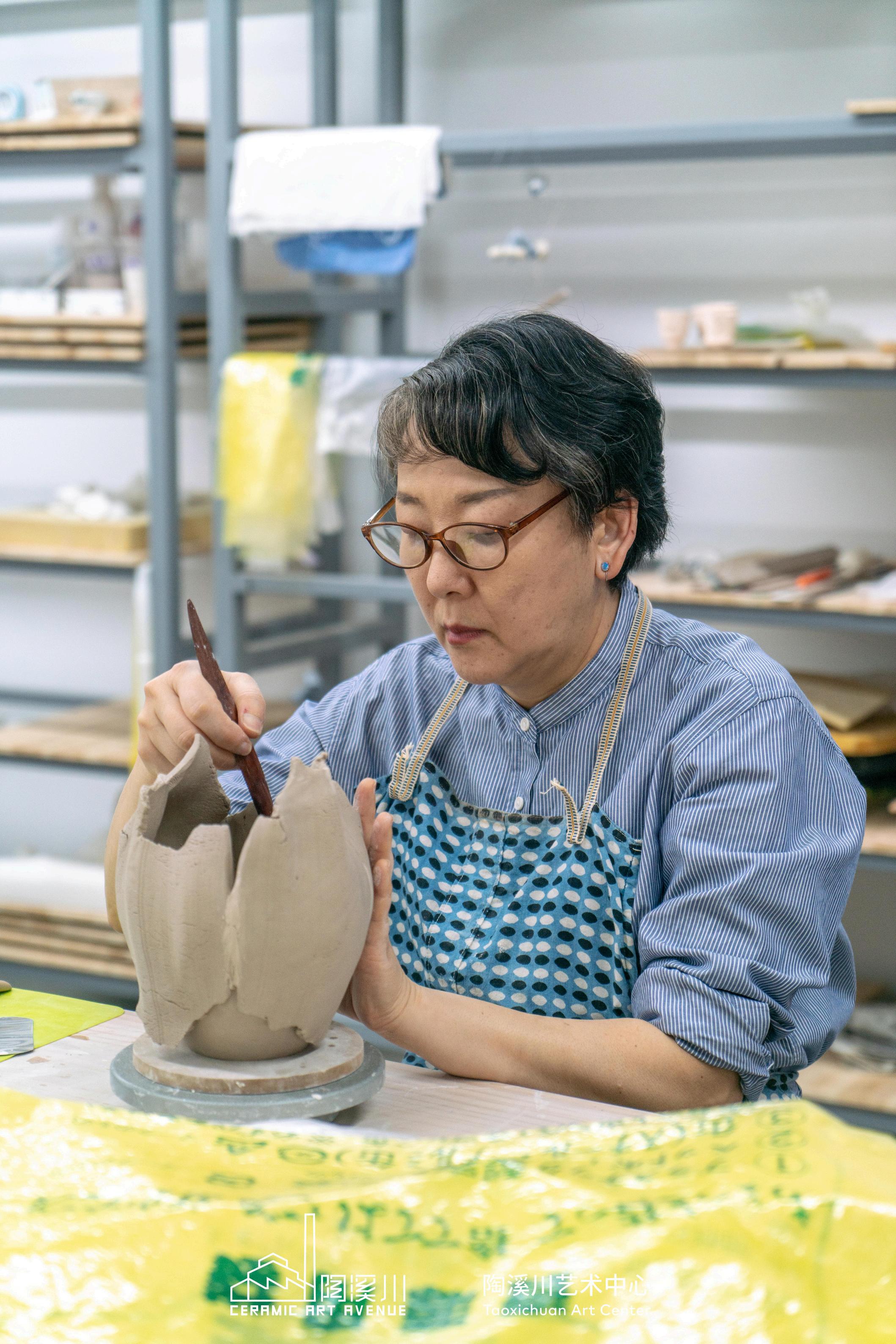
Kato’s vessels are sites of contemplation, connection, and feeling. In October 2025, she held her first solo exhibition in New York at Dai Ichi Arts gallery On the occasion of her solo show, in a recent interview with the artist, we expanded upon the material and thematic roots of her practice, and we are delighted to share these meditations in this catalog
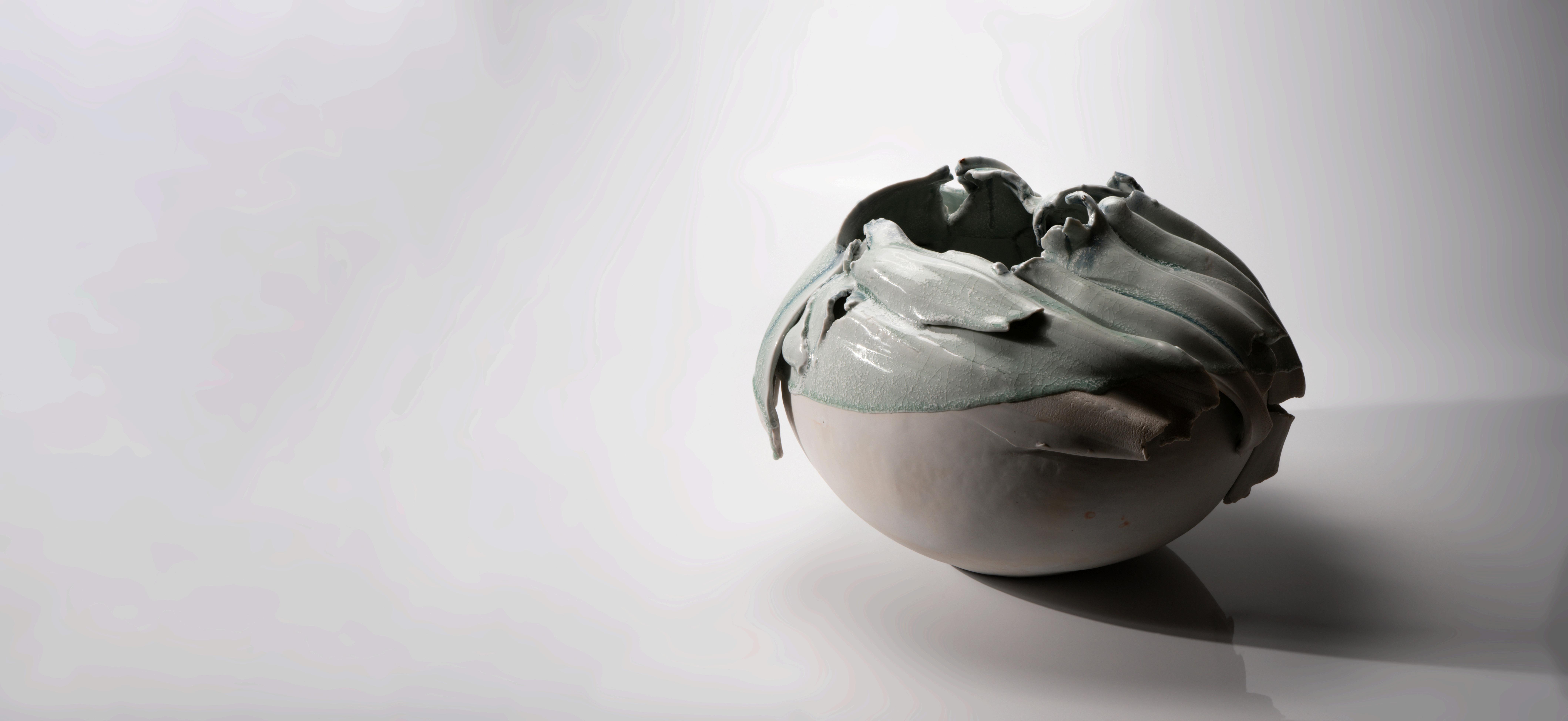
Regarding material in your process, what made you choose to work with porcelain, given that you come from the school of Tokoname pottery?
“I still make earthenware to this day, but I’m not exactly sure why I began working with porcelain At the time, I was in a self-deprecating mindset, but I wanted to turn things around So, I started working with porcelain almost instinctively perhaps
I was drawn to its smooth, fine texture the purity of its whiteness felt like a blank sheet of paper. It showed me something honest, unadorned I found myself chasing that feeling, hoping to become like that unclouded and clear In a way, porcelain helped me shift my perspective It became the medium that best expressed what I wanted to create ”

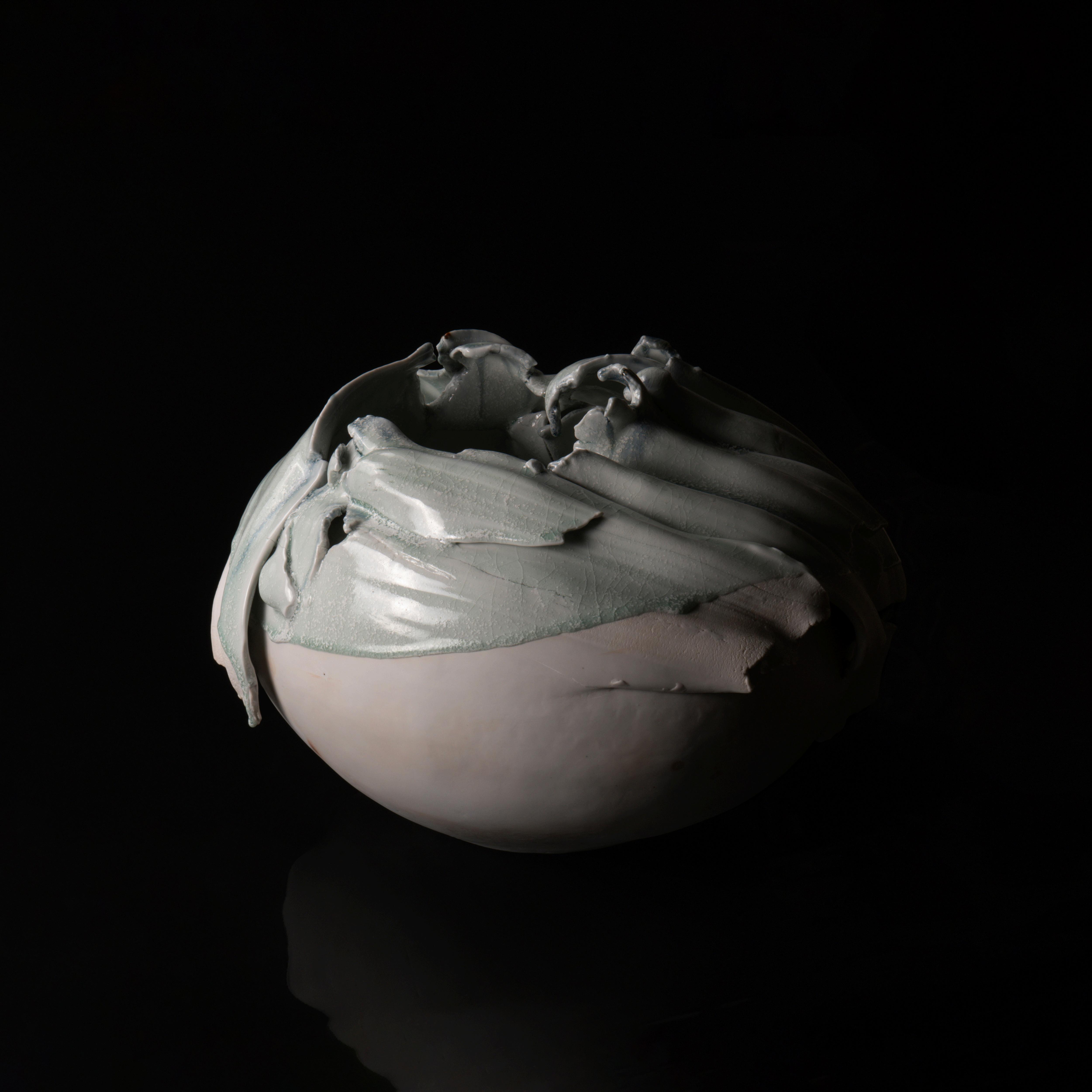

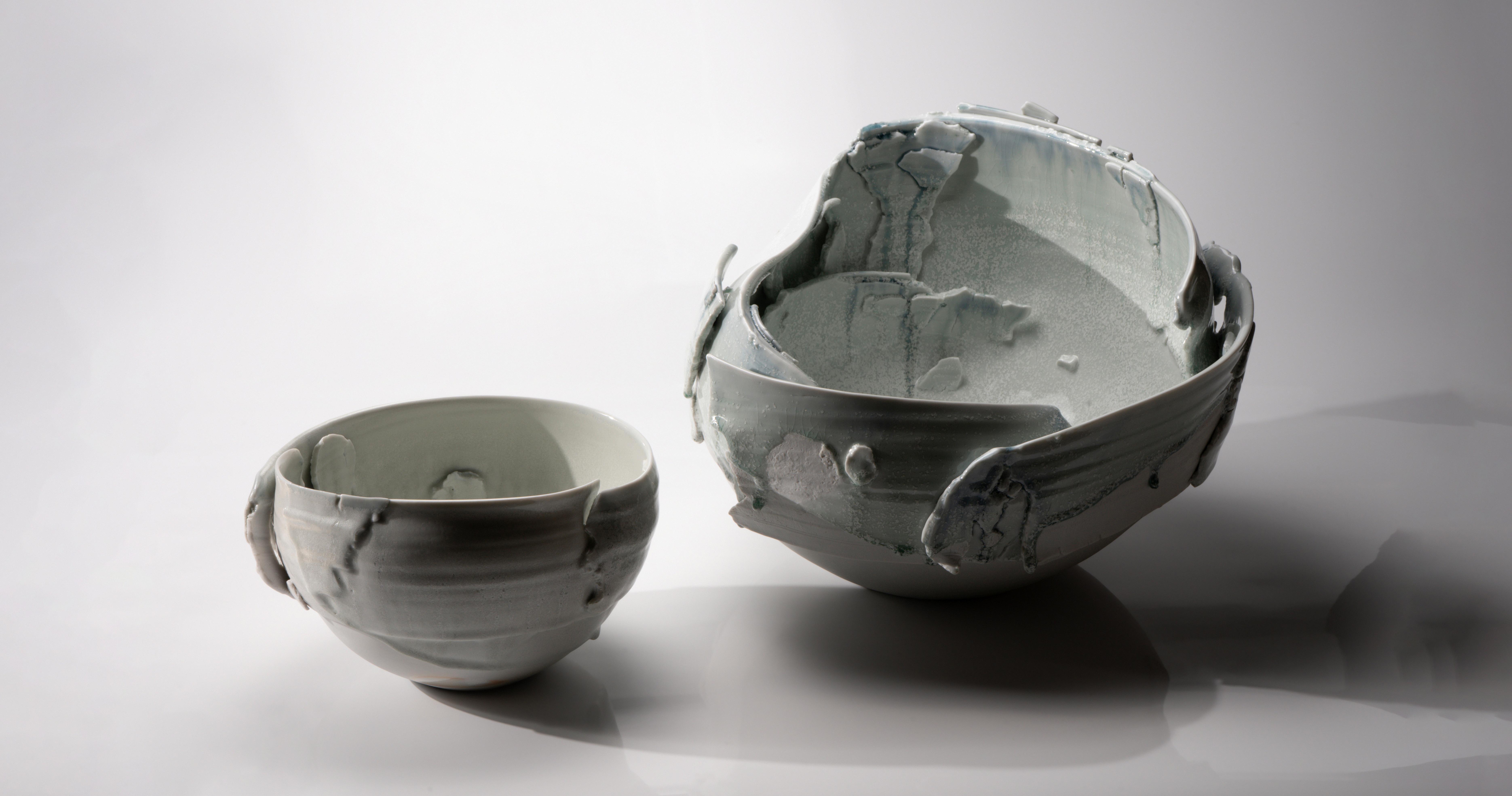

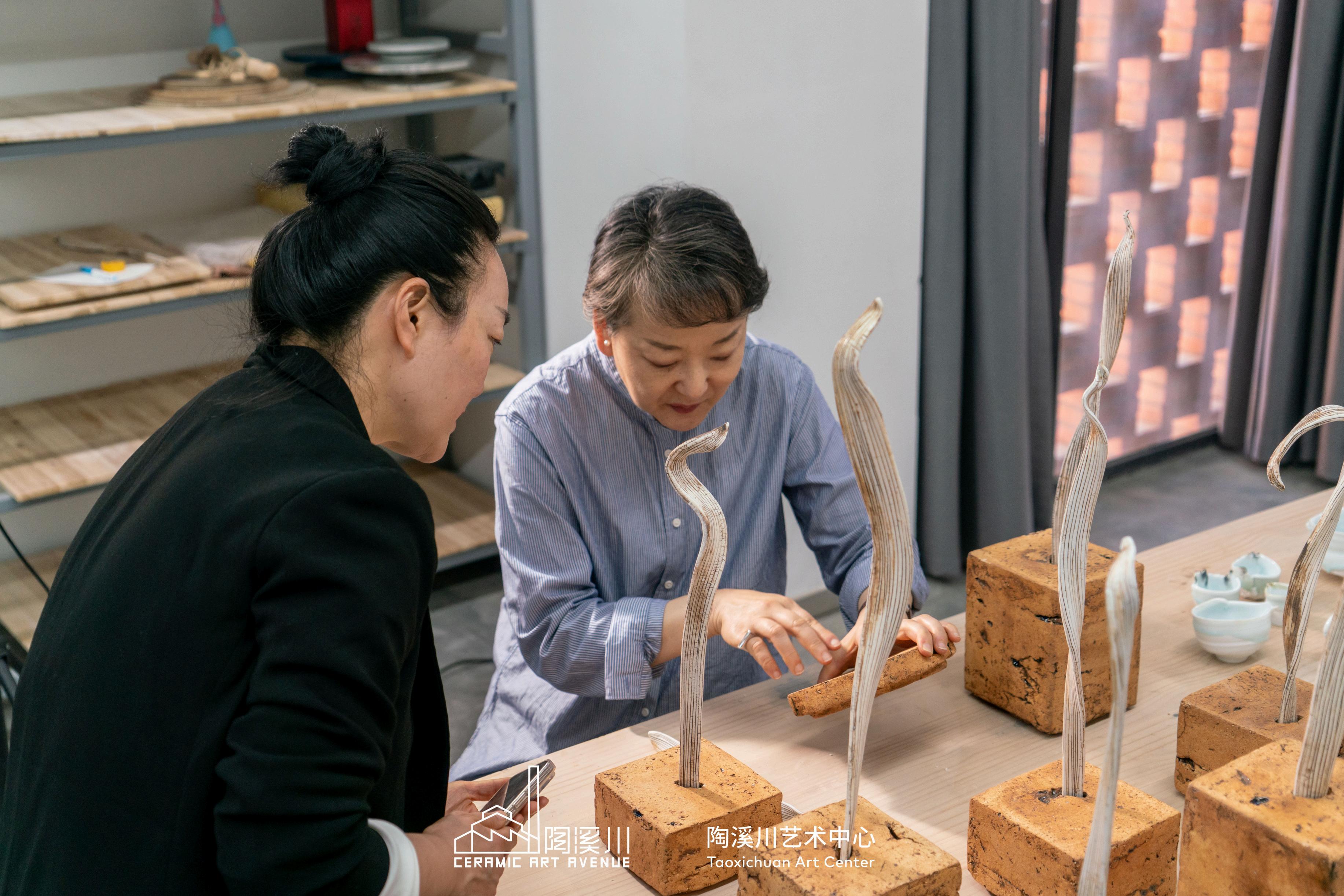
In your vessels especially, there’s an evocative sense of ruins and the passage of time. Those ones reminded us of those experiences you shared before: was that a conscious choice?
“I think it’s an unconscious, latent desire. Of course, I approach it consciously seeking balance but still, it comes from somewhere deeper. There are moments in life when I grow tired of both my own ego and the claims of others. In those times, I find myself longing for a presence that simply exists quietly standing there
There’s something moving about a thing that has been abandoned and left to decay naturally The process of returning to nothingness the disappearance of artificiality through deterioration. Everything, eventually, crosses over to the other side. It feels like a kind of purification. And I find that beautiful.
Perhaps that’s why my work ends up feeling so natural There may be a Buddhist element to it this acceptance of impermanence I think it’s something I’m able to express because of my own weakness “
Kato Mami
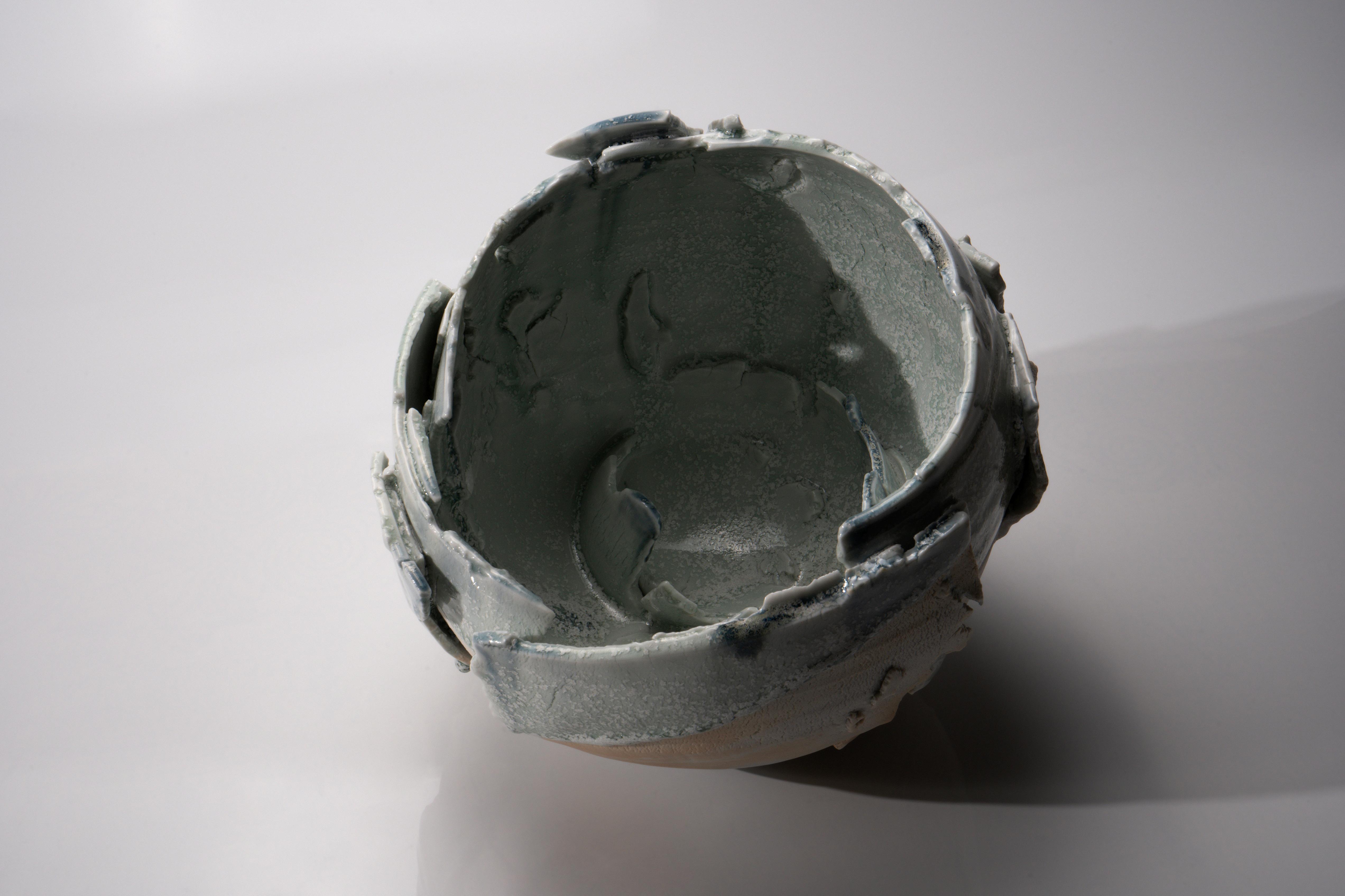
Regarding the theme of pottery as a universal language: You mentioned in the past that you visited archaeological sites with your father from a young age. How has witnessing the resilience of unearthed artifacts and the process of archaeology influenced your own works?

Rather than saying that pottery is a universal language, I feel that I create it as a metaphor for a universal landscape I vividly remember being six years old, barefoot at an excavation site in Nagasaki, when a scholar pointed out a pottery shard embedded in the mud The idea that this shard had been made and used by someone in ancient times and was now right there in front of me struck me as incredibly important, essential, and romantic.
That image of pottery fragments has remained in my subconscious ever since I think my awareness would occasionally return to it while creating I also enjoyed imagining the original shapes and curves that once connected those fragments into a whole
I developed an original glaze called frost glaze, which I mixed to achieve a weathered texture resembling the silvered Roman glass often found in excavated pieces What I find beautiful is how, with time, the artificiality of old objects fades They begin to resemble something more natural as if returning to the earth


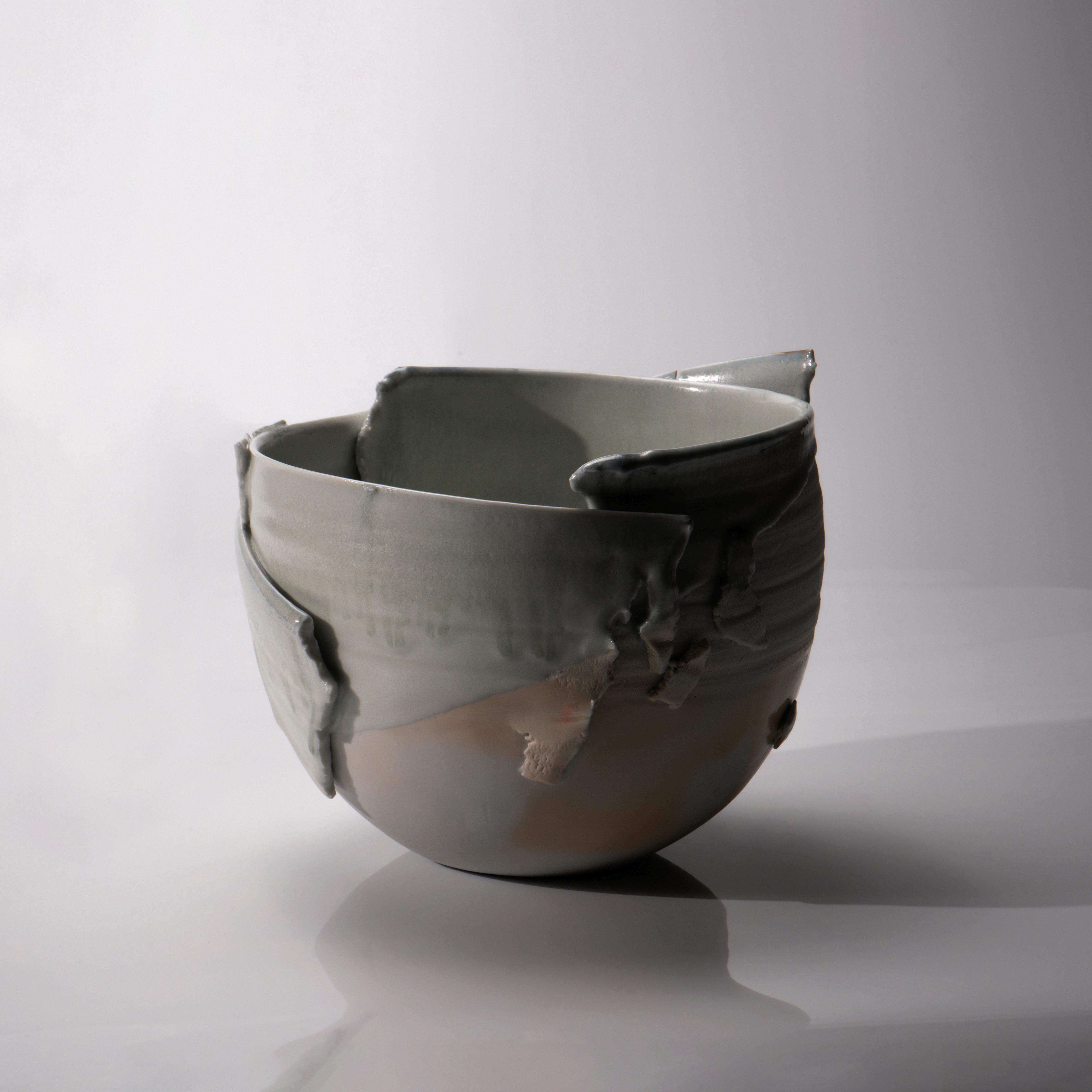

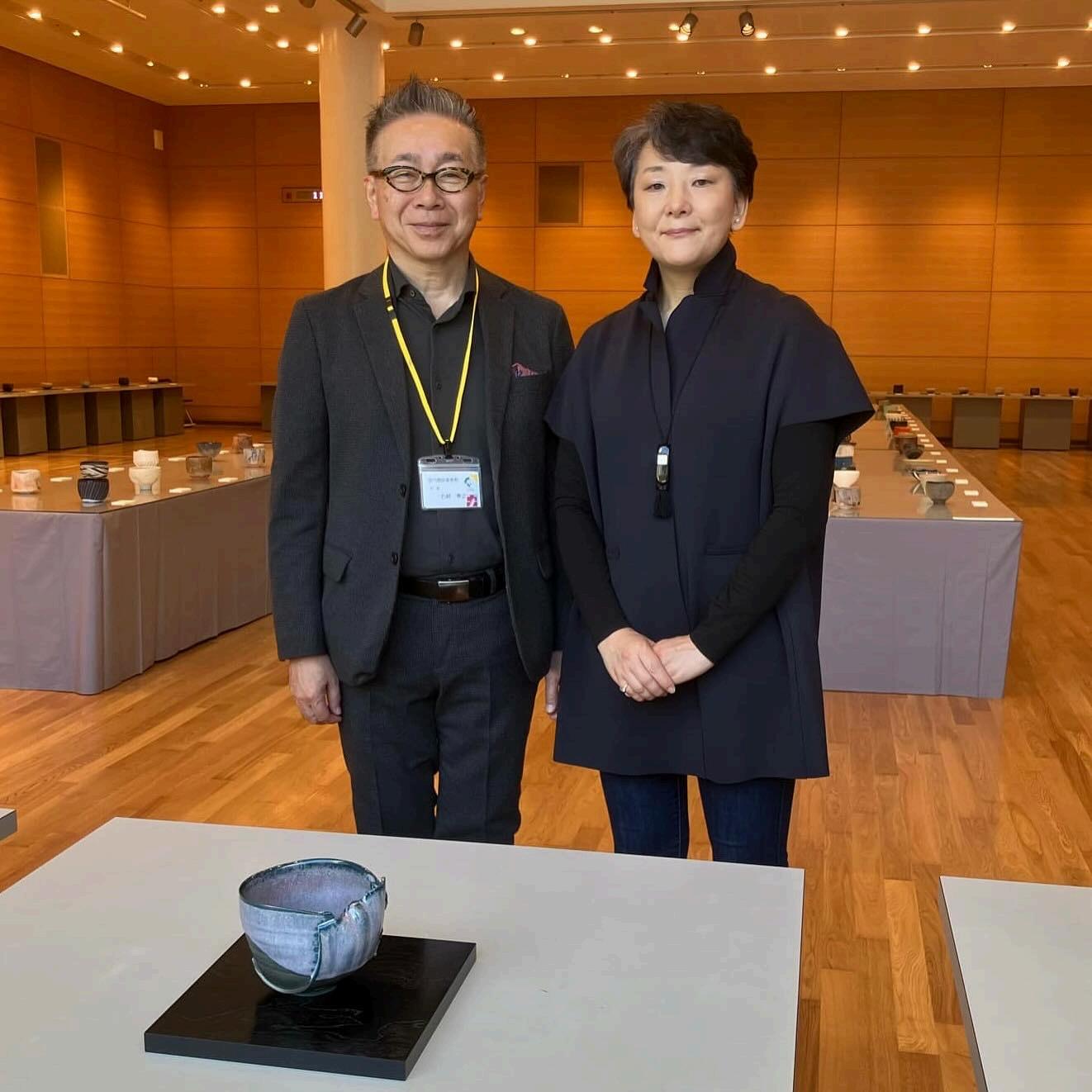
Kato Mami pictured with judge Ishizaki Yasuyuki during the award ceremony, 2024 Image courtesy of the artist
Mino Tea Bowl Competition 2024, Grand Prize Award
The fascination of this tea bowl lies in its bold expressiveness, unclouded by hesitation The joint line of the tatara (slab-built clay) runs upward from the waist to the rim, sketching a supple, graceful curve. At the rim, that line bursts forth into a dramatic flourish, where the raw earth turns freely, almost turbulently, like waves in motion. This lends the form a dynamic and vigorous momentum.
At first glance, the piece may evoke the impression of a sculptural object Yet, as a tea vessel it remains entirely functional and complete. By slipping past the many constraints typically imposed on tea bowl-making, the work reveals the maker’s extraordinary sensibility and mastery.
Ishizaki Yasuyuki ⽯崎 泰之, Director of Museum of Modern Ceramic Art, Gifu Judge, MINO
bowl competition
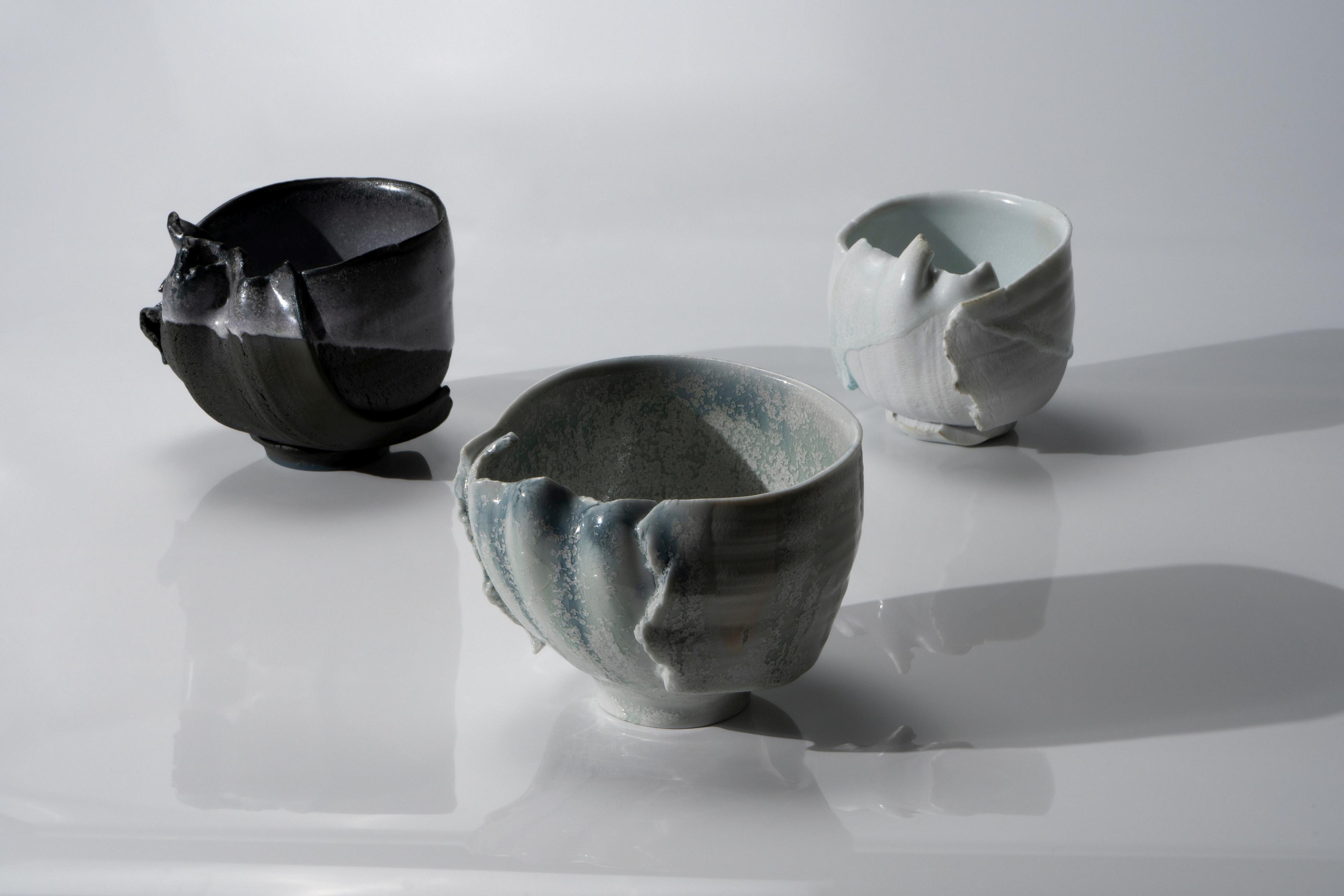
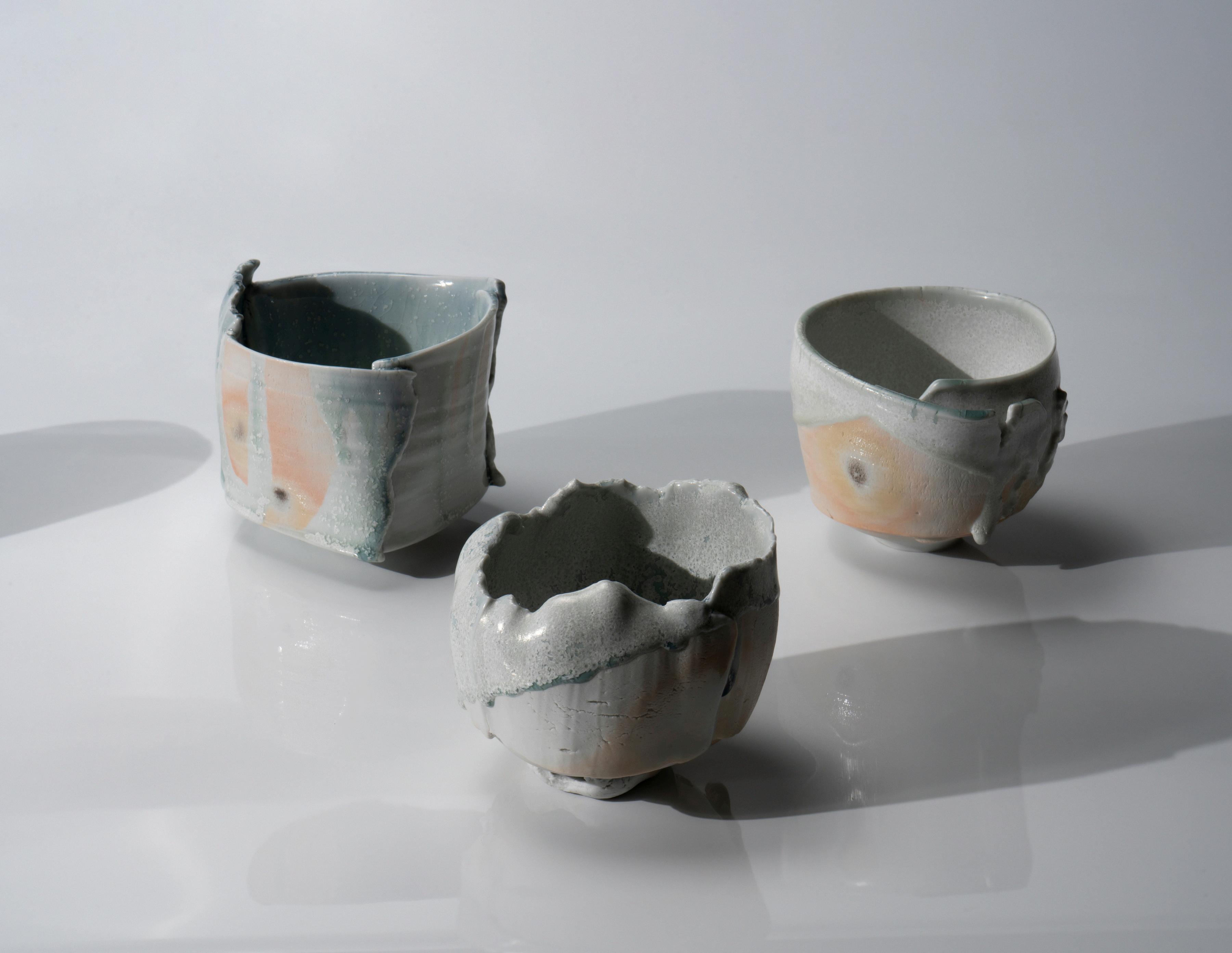

On the winning tea bowl, Shōroku Award “Tea Bowl with Gray Frost Glaze” by Kato Mami
This tea bowl was formed by draping a slab of clay over a mountainshaped plaster mold. Where the slabs overlap on the body, they are slightly misaligned and crimped, creating a distinctive nuance unique to the artist These subtle distortions lay bare the internal structure of the vessel, posing the question: What is a vessel? In this way, the artist imbues the work with a deeply personal reflection. It becomes, in a sense, a space through which the self is released.
Kenji Kaneko ⾦⼦ 賢治, Director of Ibaraki Ceramic Art Museum

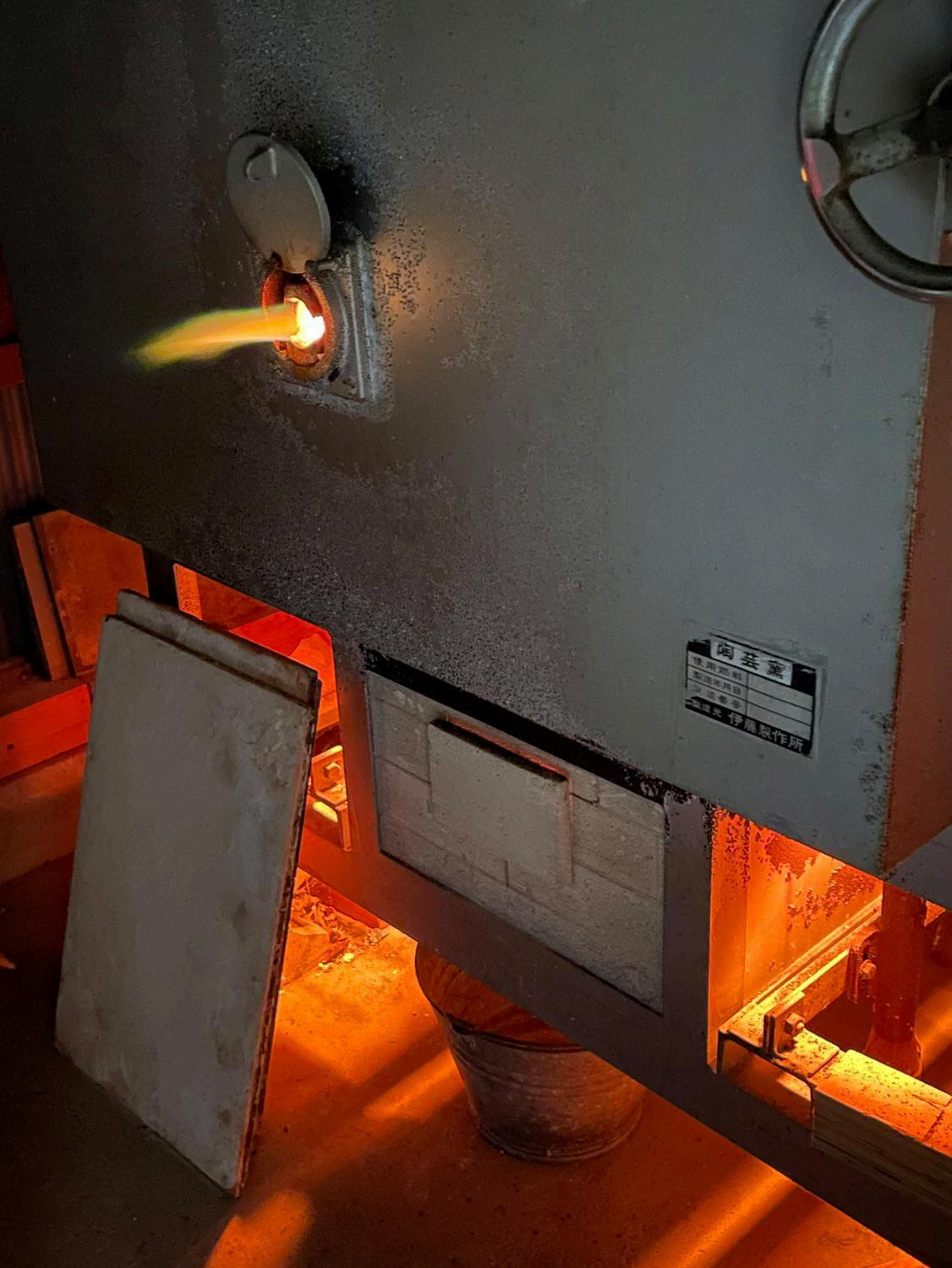

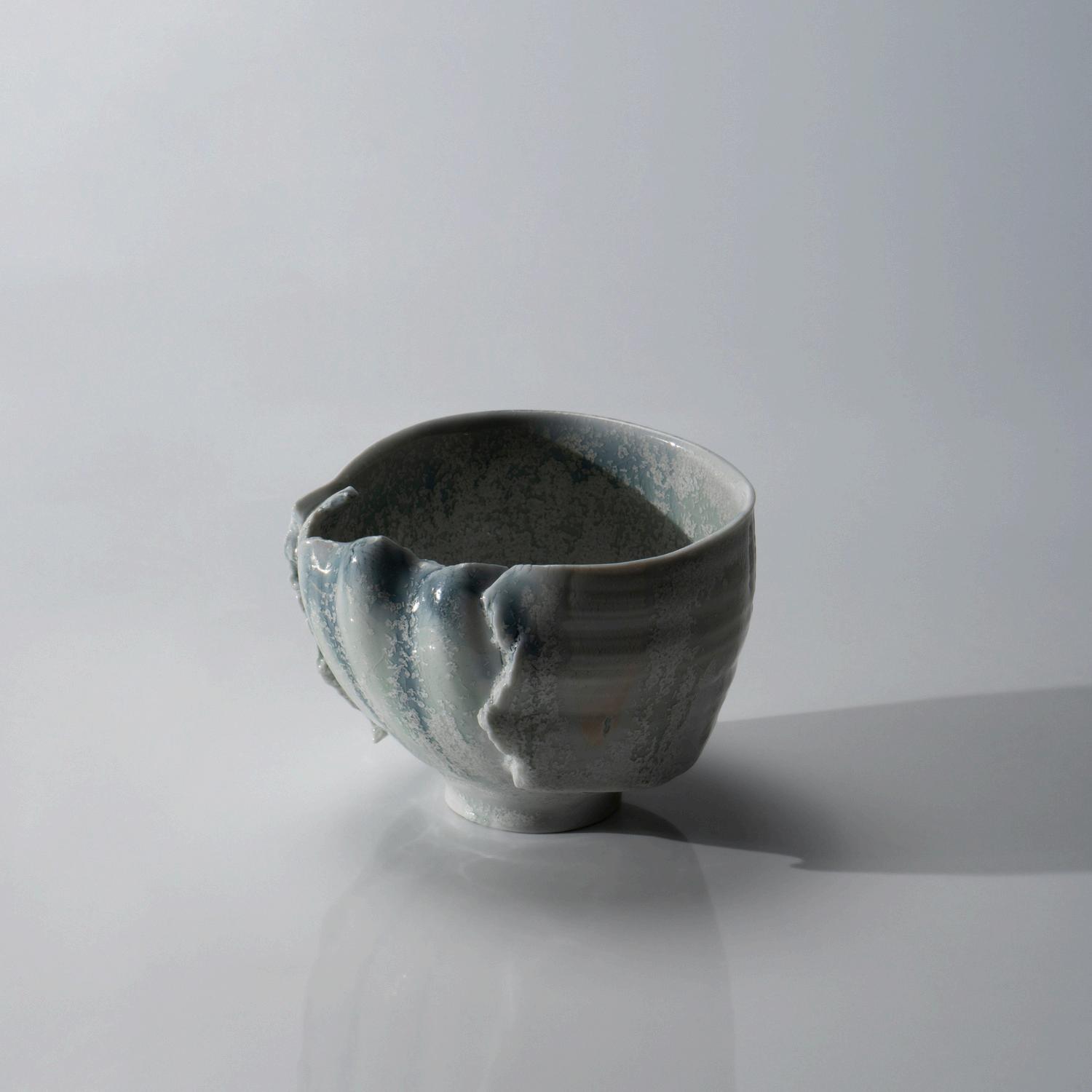
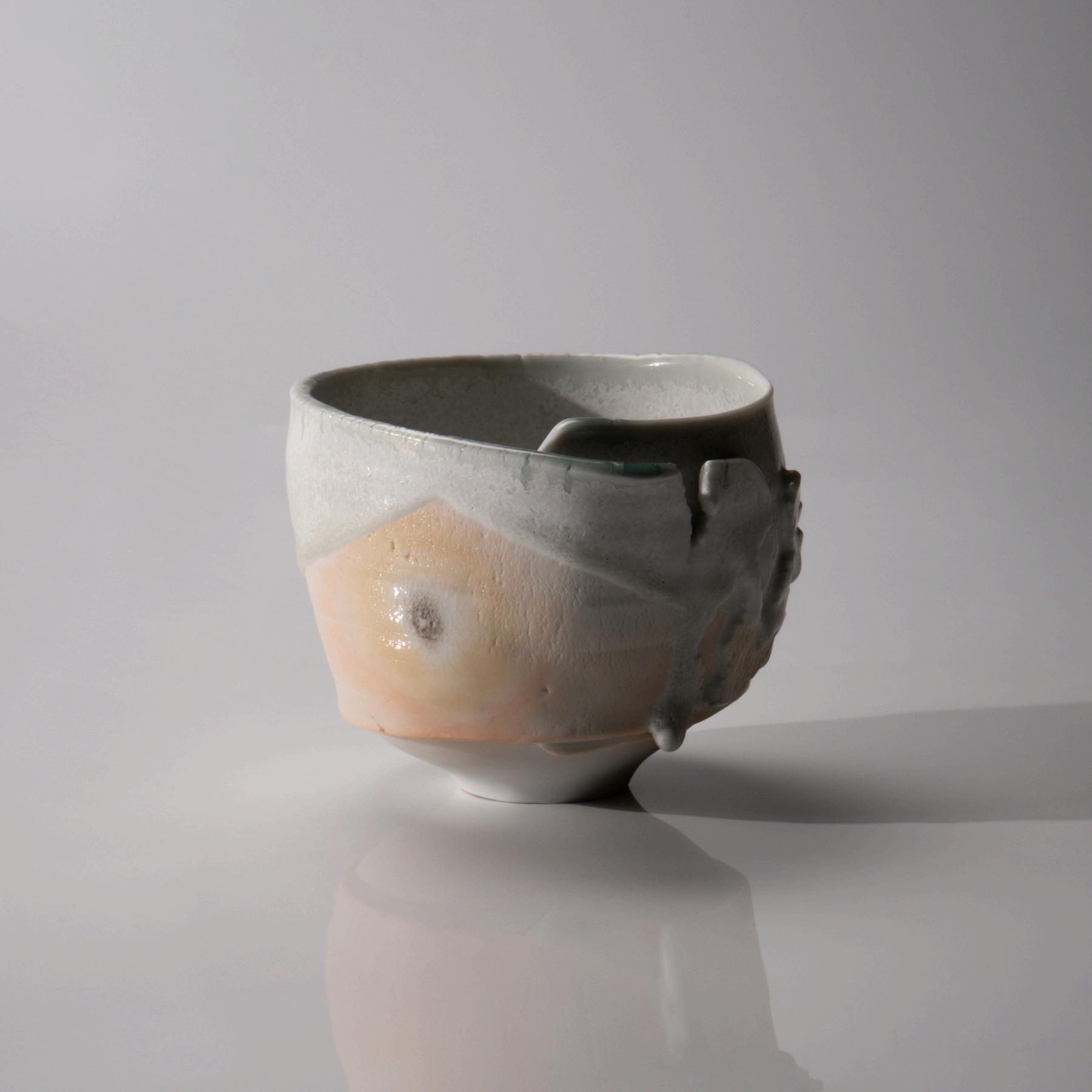
You were the first woman to win the Mino Chawan Exhibition: Congratulations! What made you want to submit to this competition in particular? Could you also share more about the winning piece, and what makes a good chawan to you?
Before receiving the Shuroku Award, I applied to the Chōza Togei Exhibition with a porcelain piece for the first time. It had been a long time since I’d submitted to an open call show. Koie Ryoji, who exhibited a vessel-shaped objet d’art, reviewed my work and commented, “Plain, but I hear music from it.” He awarded me the Judge’s Award.
At the time, I had been prepared to quit pottery altogether But being recognized by Koie made me think, “Someone was able to empathize with me Even if it’s quiet, someone can still hear my voice Maybe my work isn’t so bad ” With that shift in mindset, a friend encouraged me to apply to a chawan exhibition, and I submitted my work.
The awarded frost-glaze chawan was made by first cutting porcelain clay into long, thin slabs like slices of bacon and wrapping them into a circular form When a flat slab is formed into a cylinder, an interior space instantly appears I pull the slab, stretching and wrapping it naturally into a spiral Then I use a spatula to gently expand it, allowing the interior to become a rich, mellow space It feels as if the air mass inside is expanding, pressing against the porcelain walls.
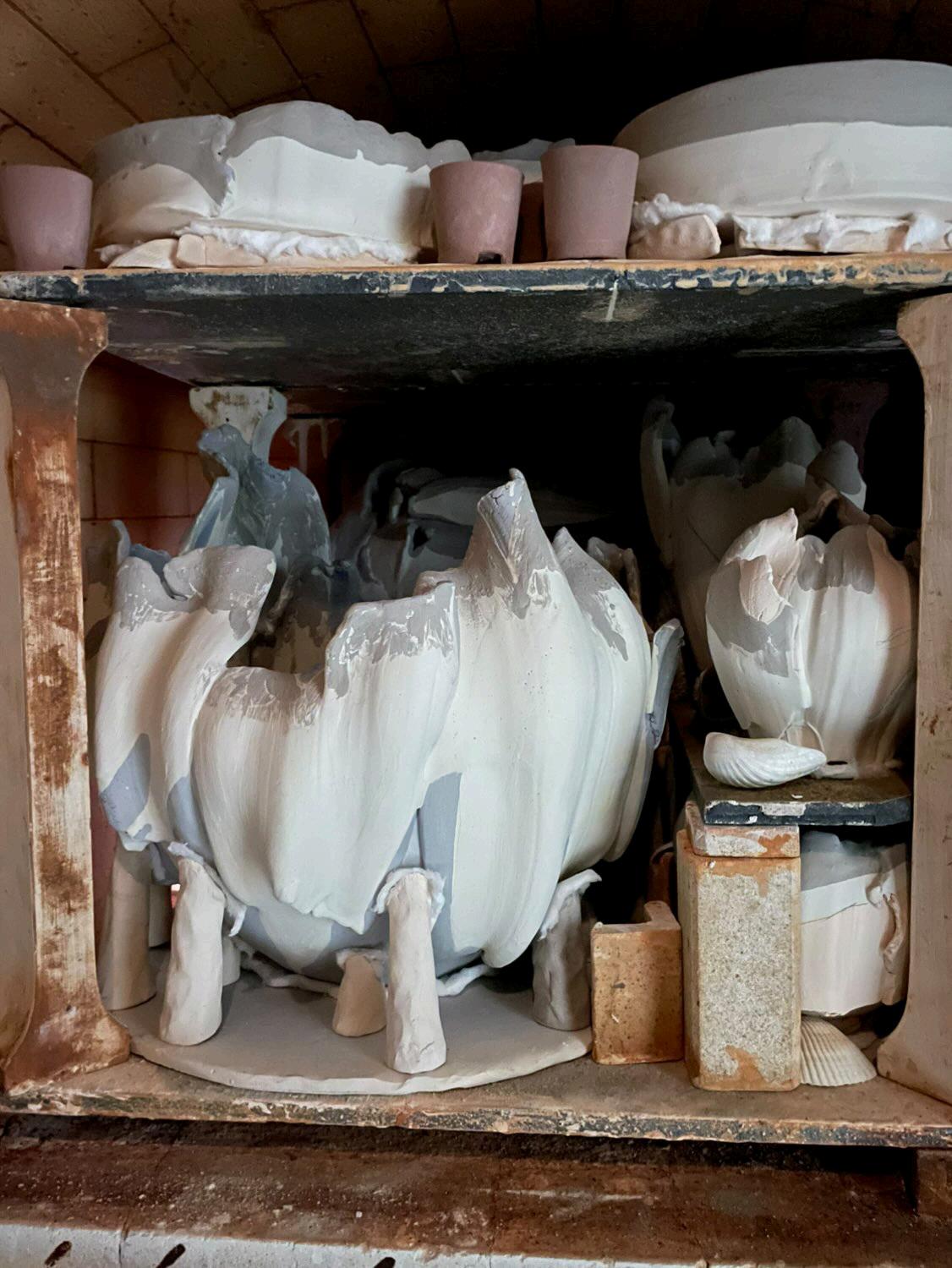



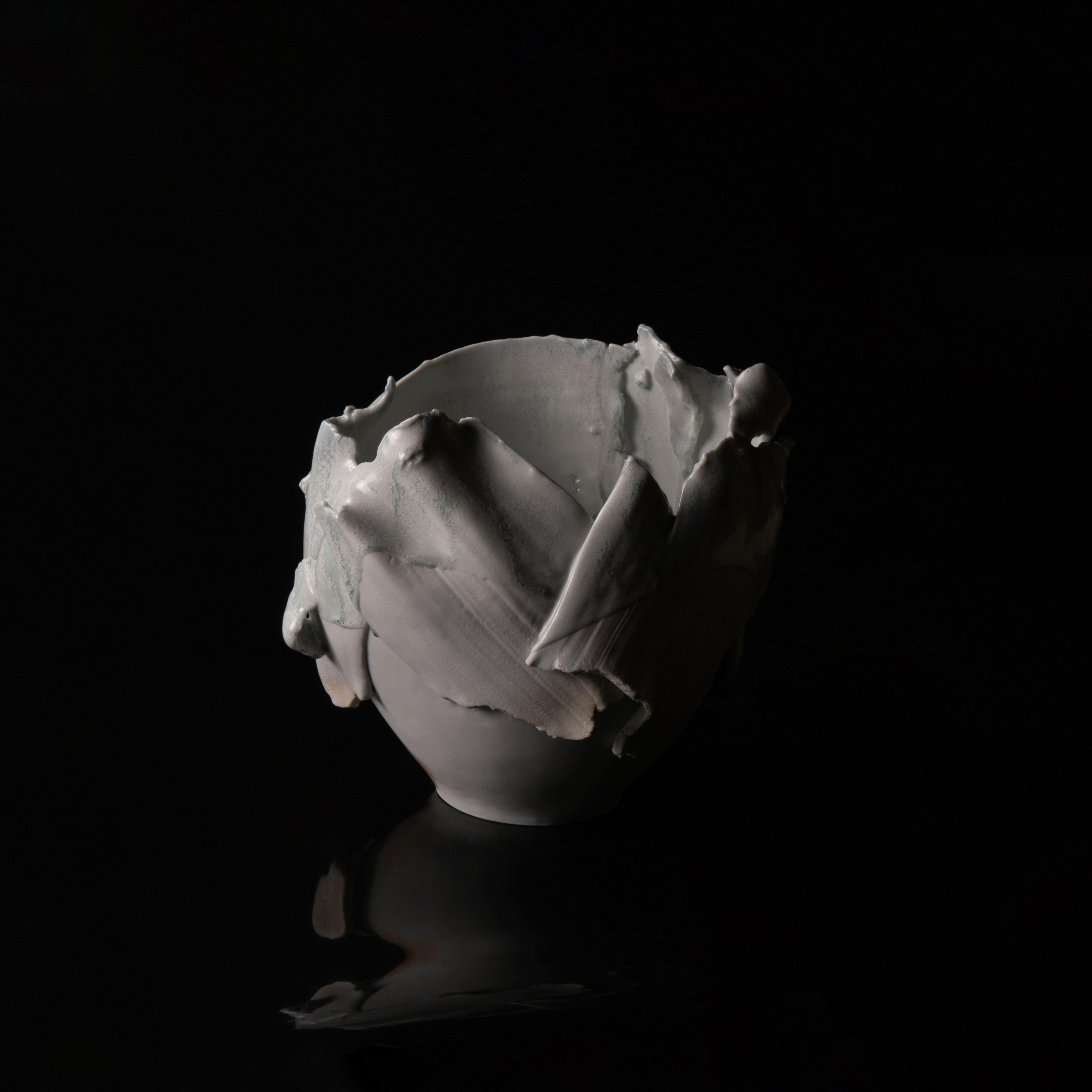

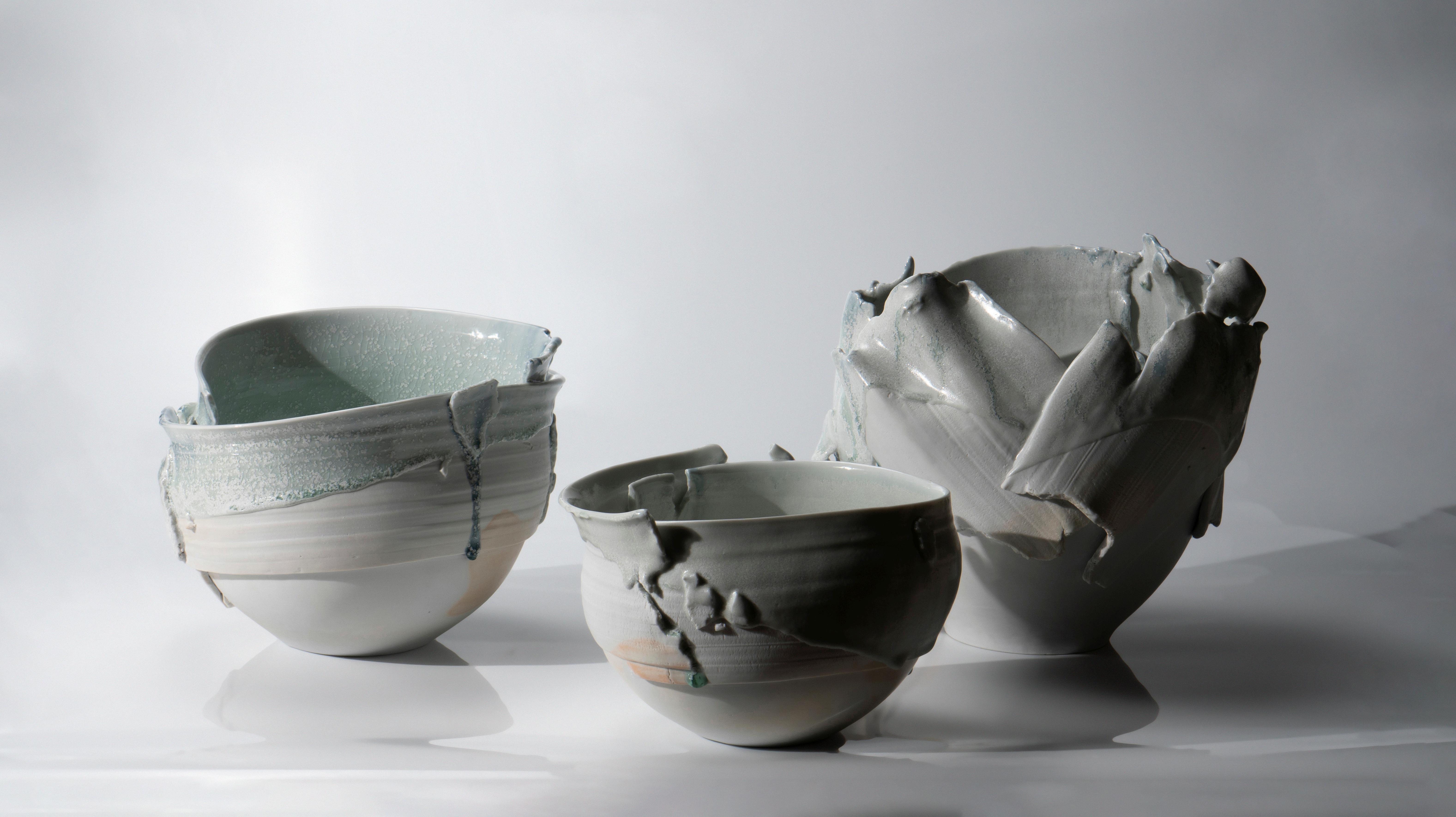

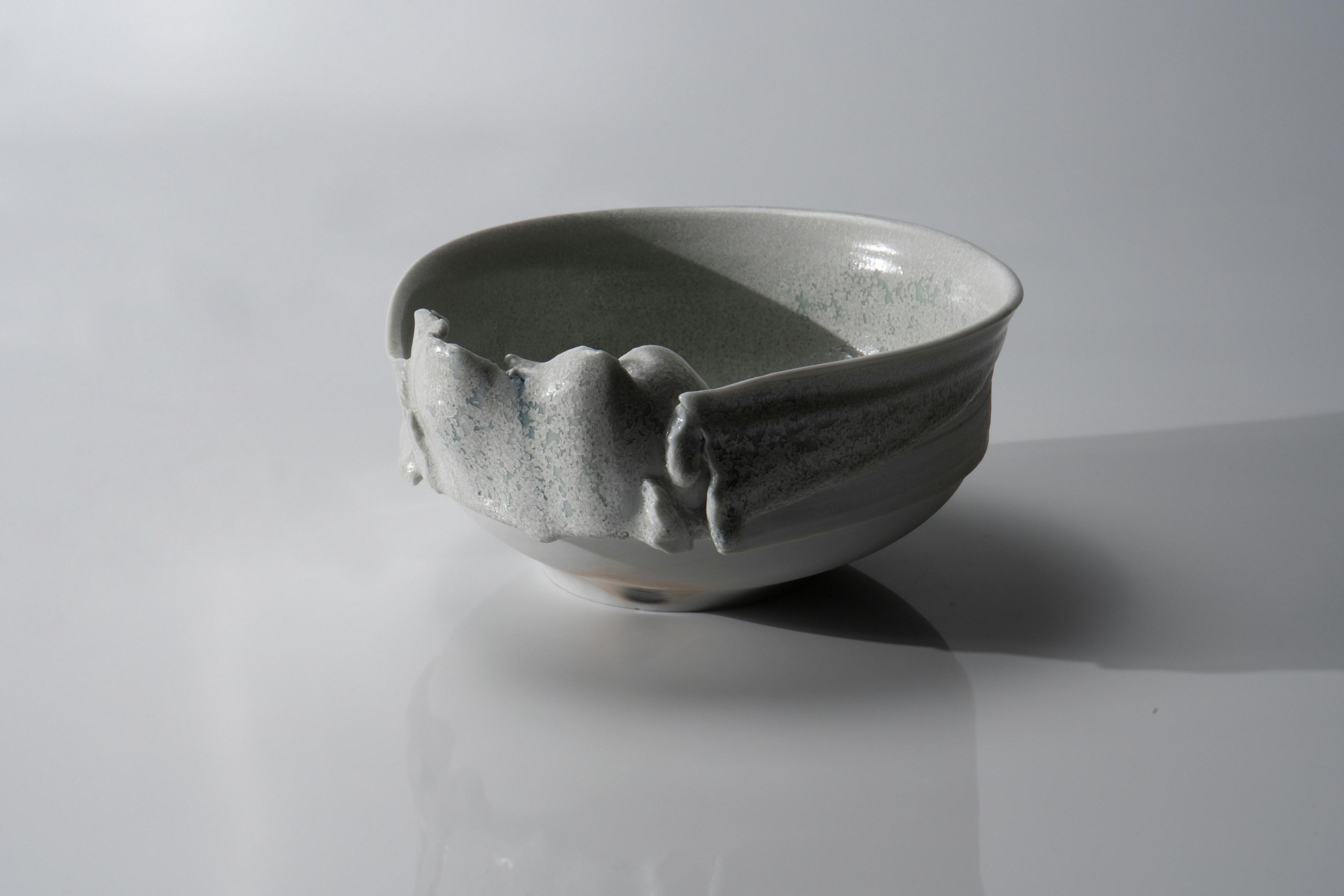
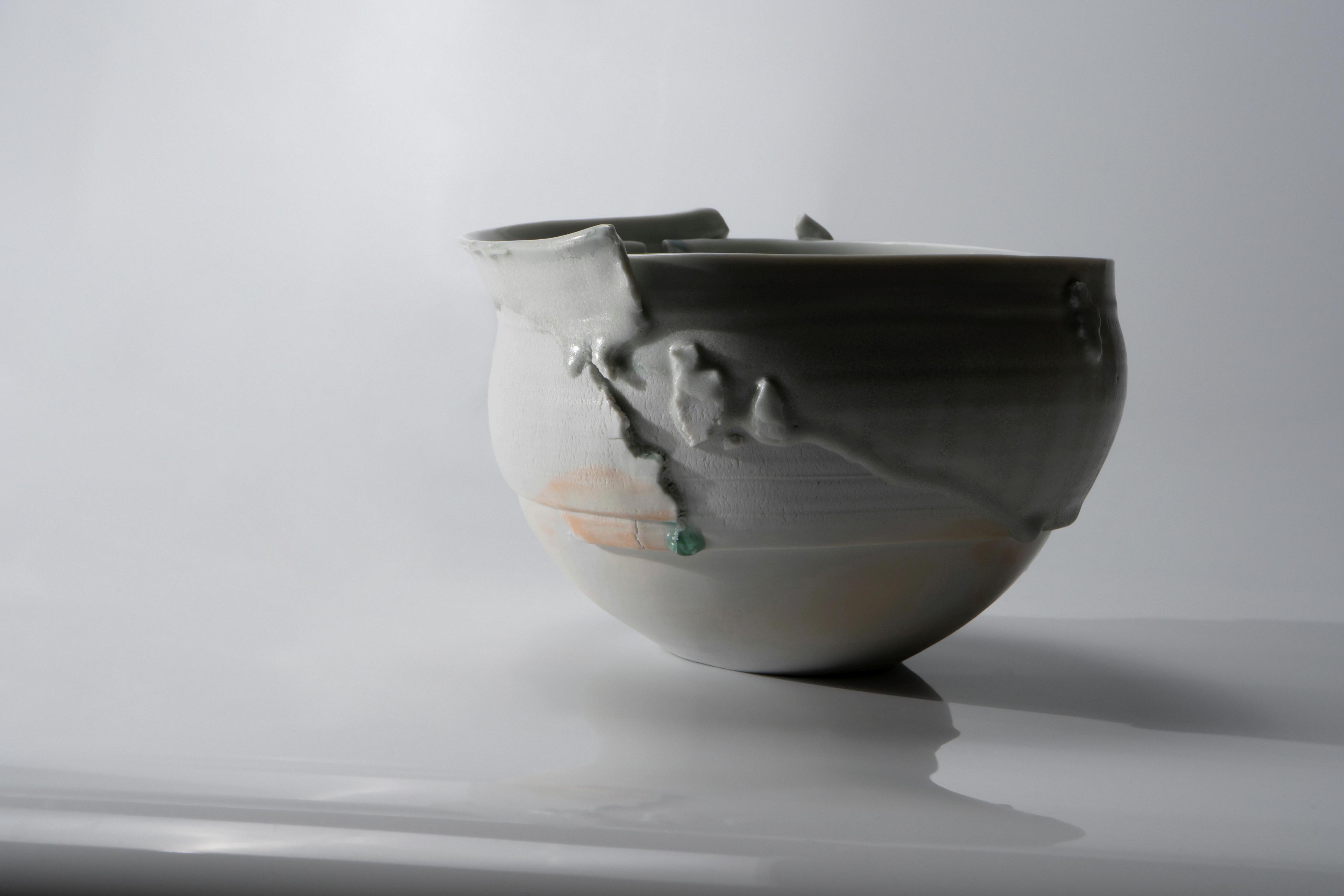
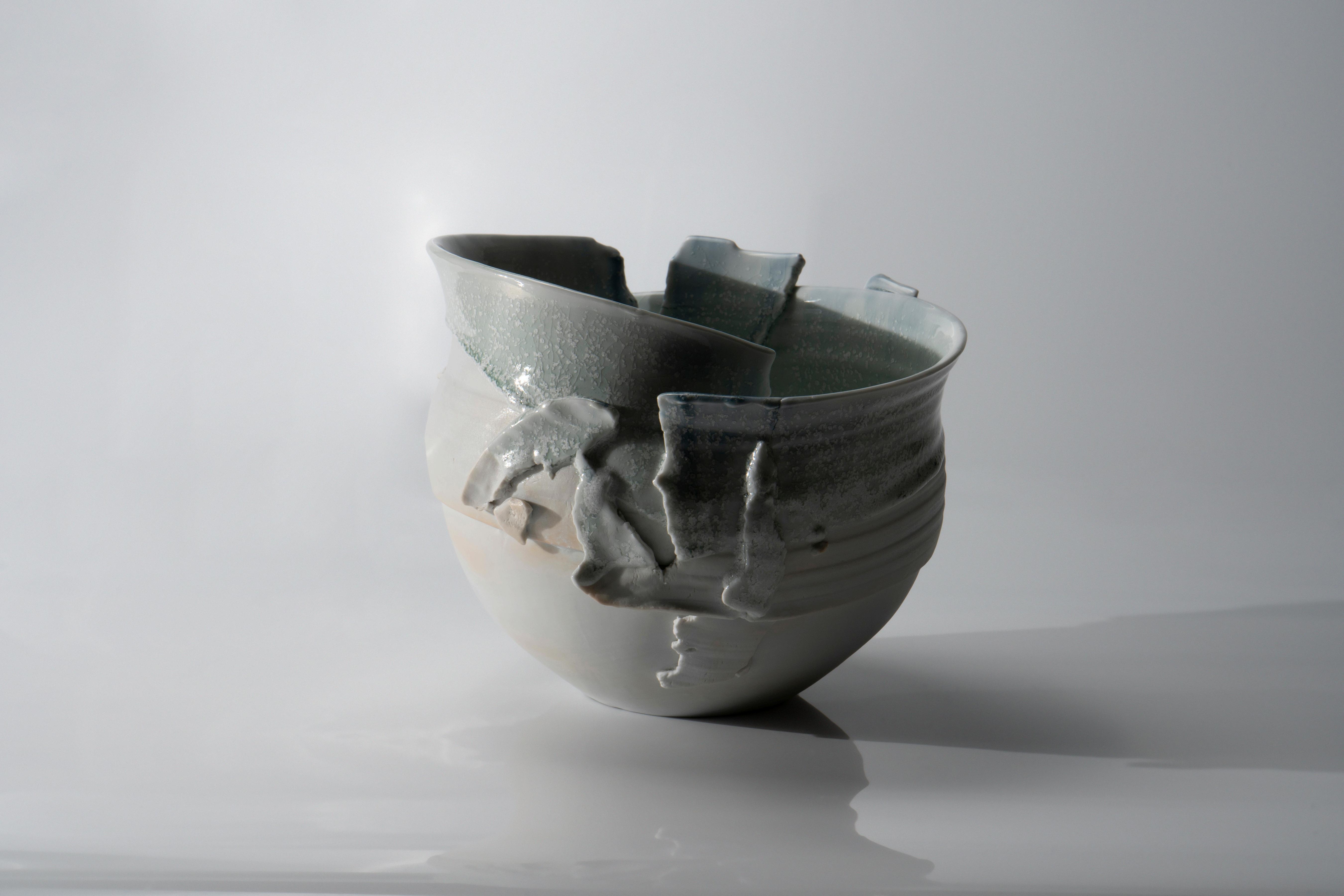
What do you hope that people can receive about your most recent works in 2025, and what’s next?
While the board construction technique presents physical limitations, I’ve recently begun to draw out a certain softness and vivid movement from it I'm no longer bound by the materials or the methods I use This shift has quietly breathed life into the world I’ve been working in until now.
Often, I’m the one who ends up impressed and inspired by how others perceive my work. So I prefer to leave the interpretation up to you I simply hope that you’ll journey both inside and outside of the forms, and listen to their small whispers
Looking ahead, I want my work to feel less artificial less tethered to what I’ve already done. I hope to create something that goes beyond all of that something that makes people sigh in quiet relief. That’s about it
Pottery will remain on this earth long after I’m gone, sometimes bathed in moonlight, sometimes resting in silence, traveling through time with the traces of me I hope to create something with a universal presence something that can belong anywhere: in a desert, on the moon, or beneath the sea.
Those with little talent have no choice but to be honest
So I ask myself: how far can I go?
Kato Mami, 2025
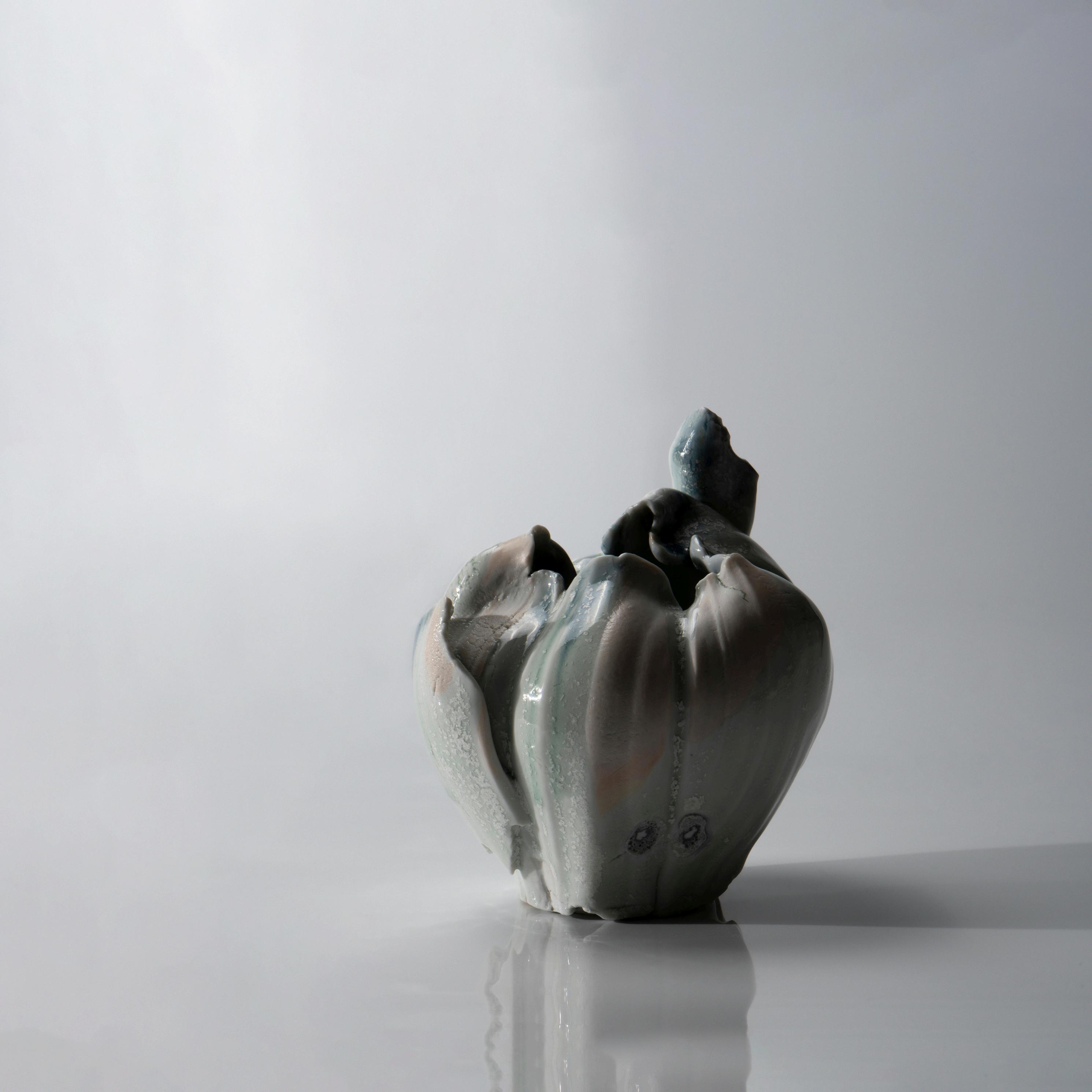
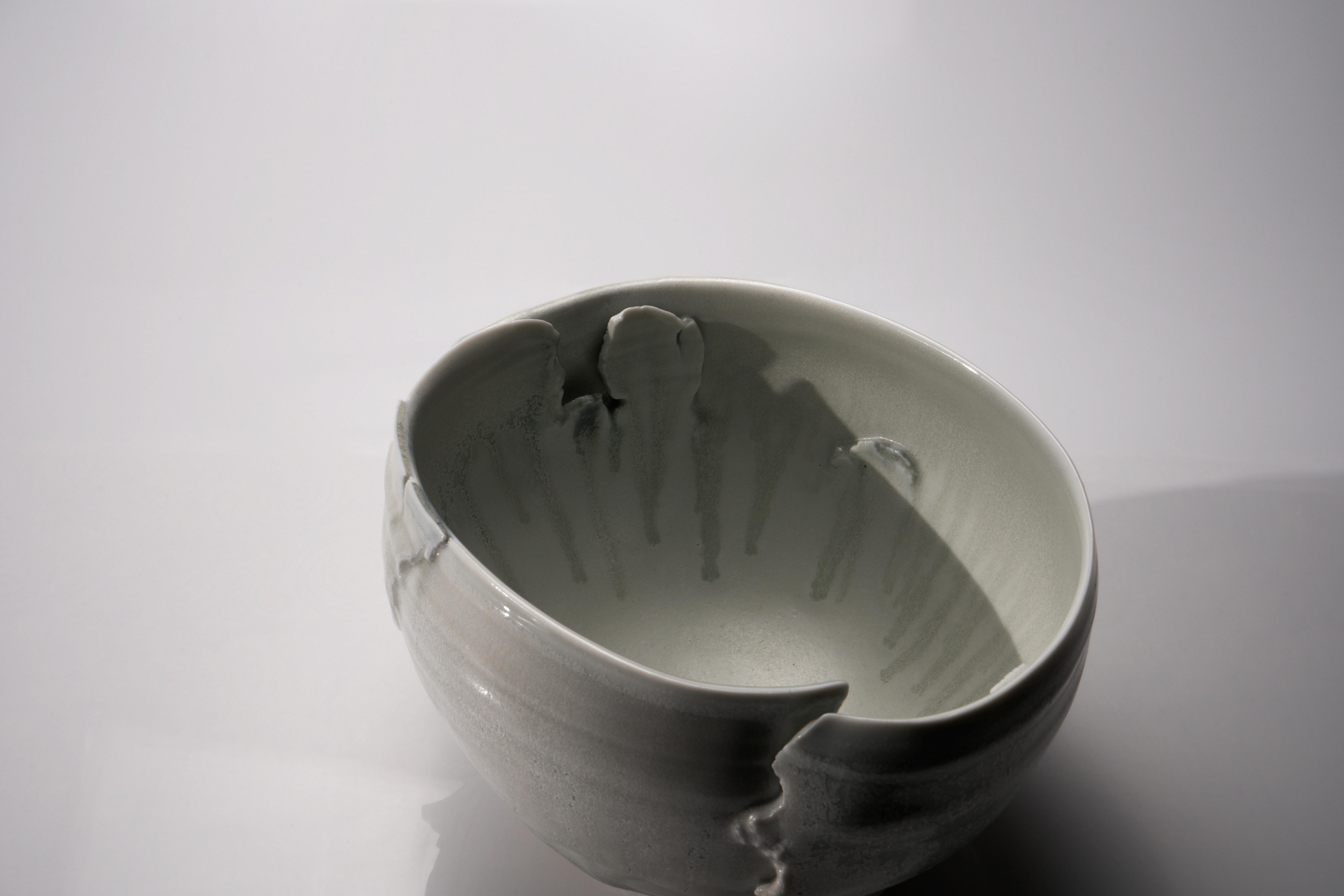
LIST OF WORKS
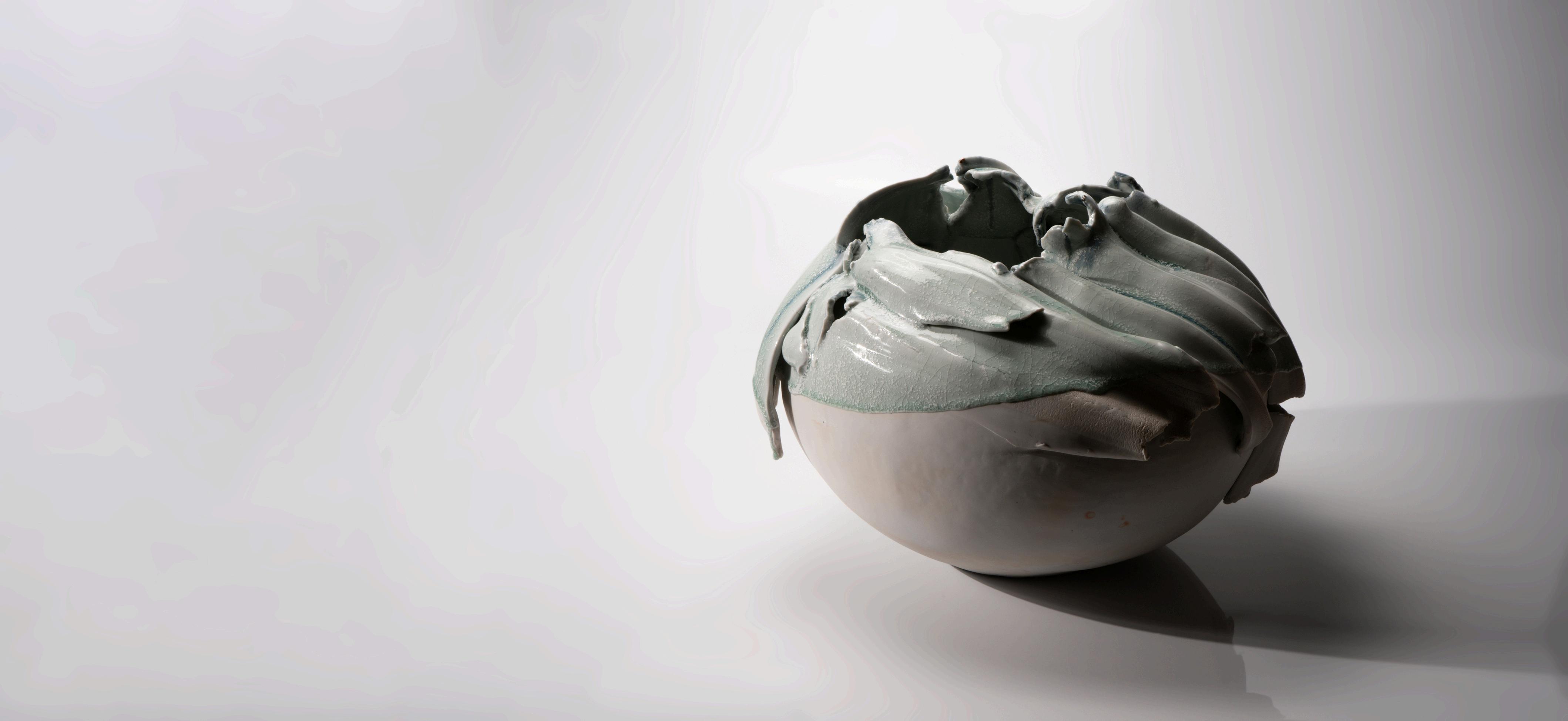
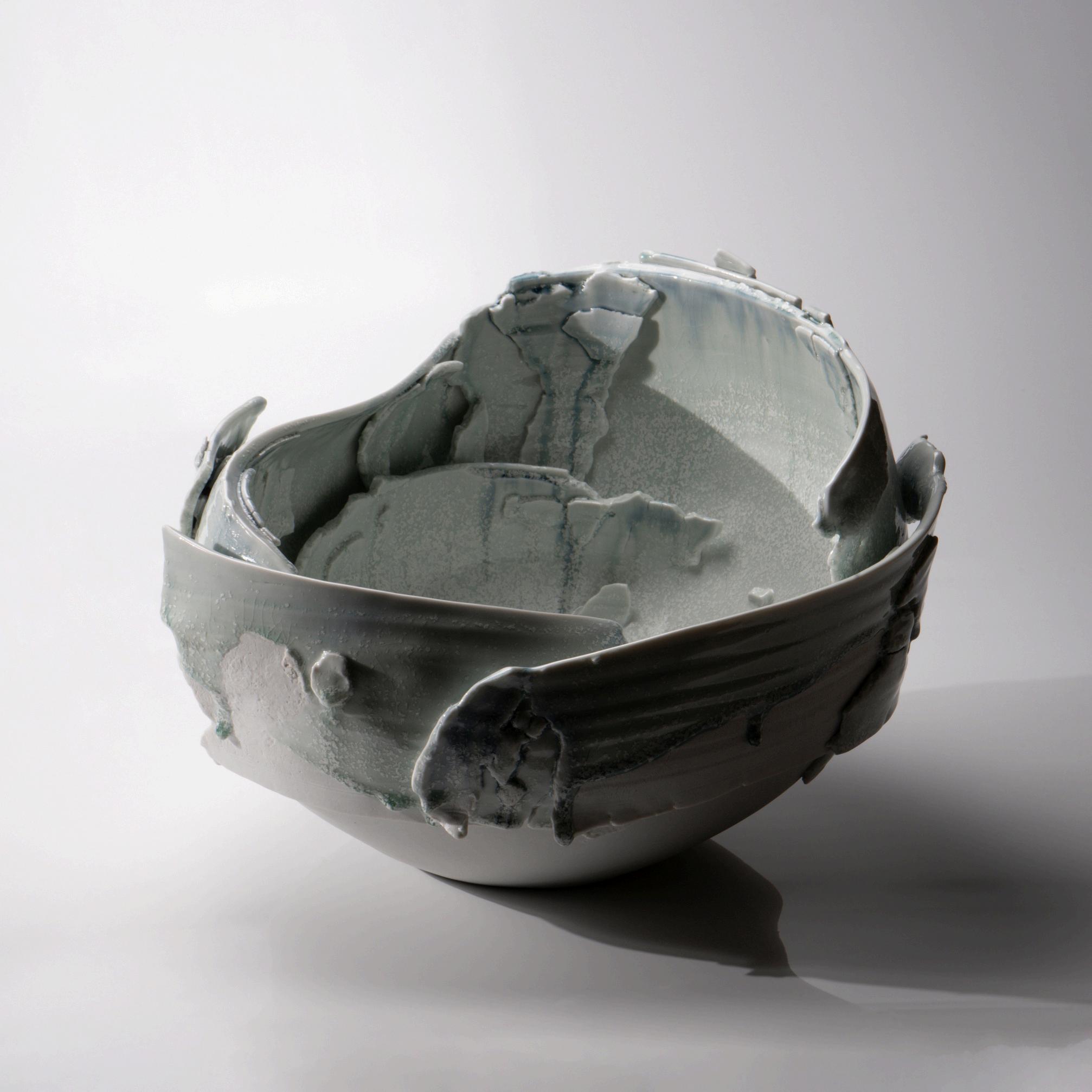
Mami 加藤 真美 hio (High Tide), 2025
With signed wood plate, Seto porcelain, (h) 325 × (w) 42 × (d) 35 cm
2 Kato Mami 加藤 真美
Gekka 1 (Beneath the Moon), 2025
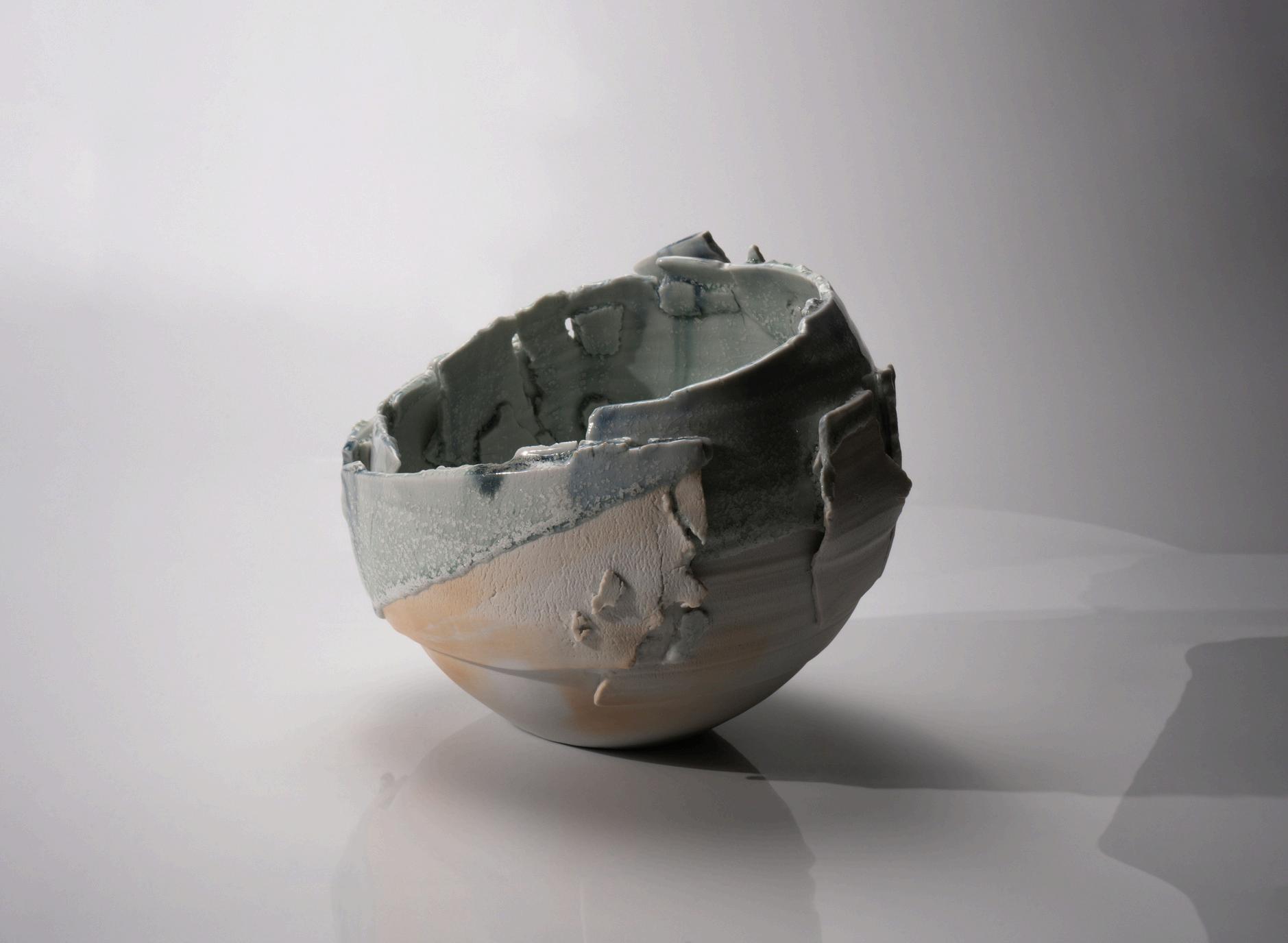
3
With signed wood plate, Seto porcelain (h) 295 × (w) 42 × (d) 39 cm
With signed wood box, Seto porcelain, (h) 22 × (w) 22 × (d) 235 cm
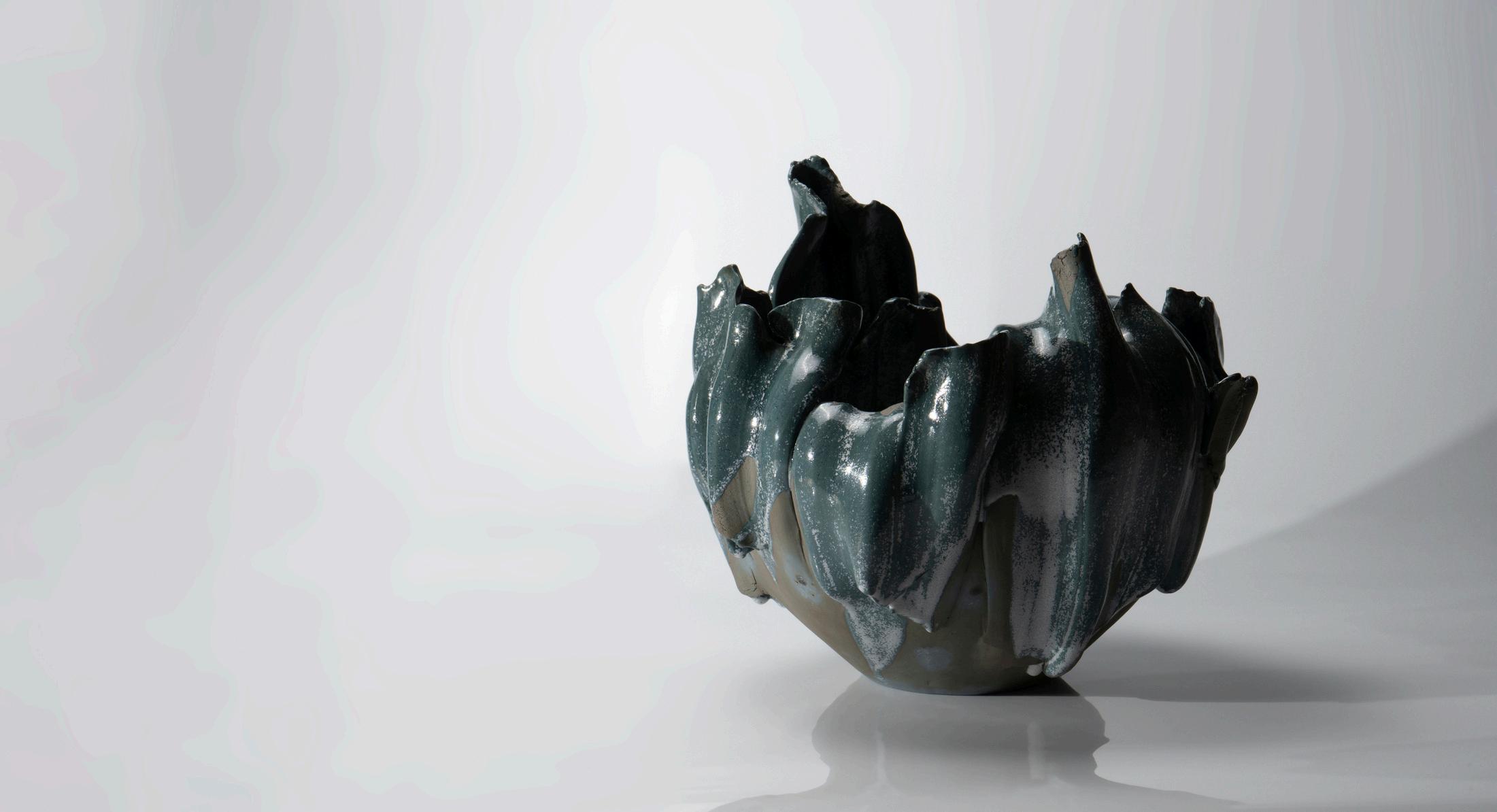
4
With signed wood plate, Seto porcelain, (h) 32 × (w) 34 × (d) 325 cm
Kato Mami 加藤 真美
Gekka 2, 2025
Kato Mami 加藤 真美 Kishibe, 2025
With signed wood box, Seto porcelain (h) 20 × (w) 26 × (d) 245 cm

With signed wood box, Seto porcelain, (h) 16 × (w) 22 × (d) 26 cm
With signed wood box, Seto porcelain, (h) 11 × (w) 13 × (d) 12 cm
With signed wood box, porcelain, (h) 105 × (w) 11 × (d) 115 cm
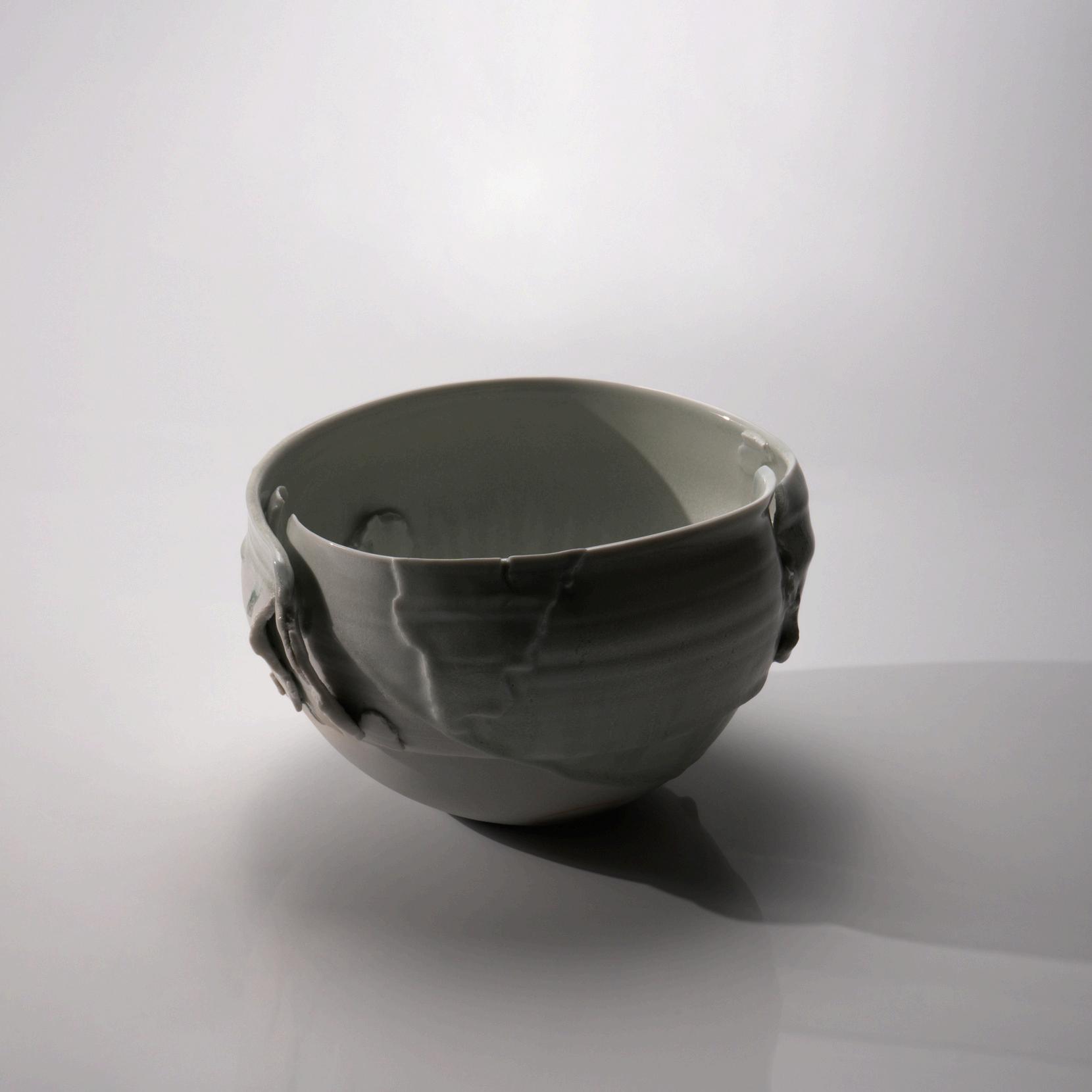
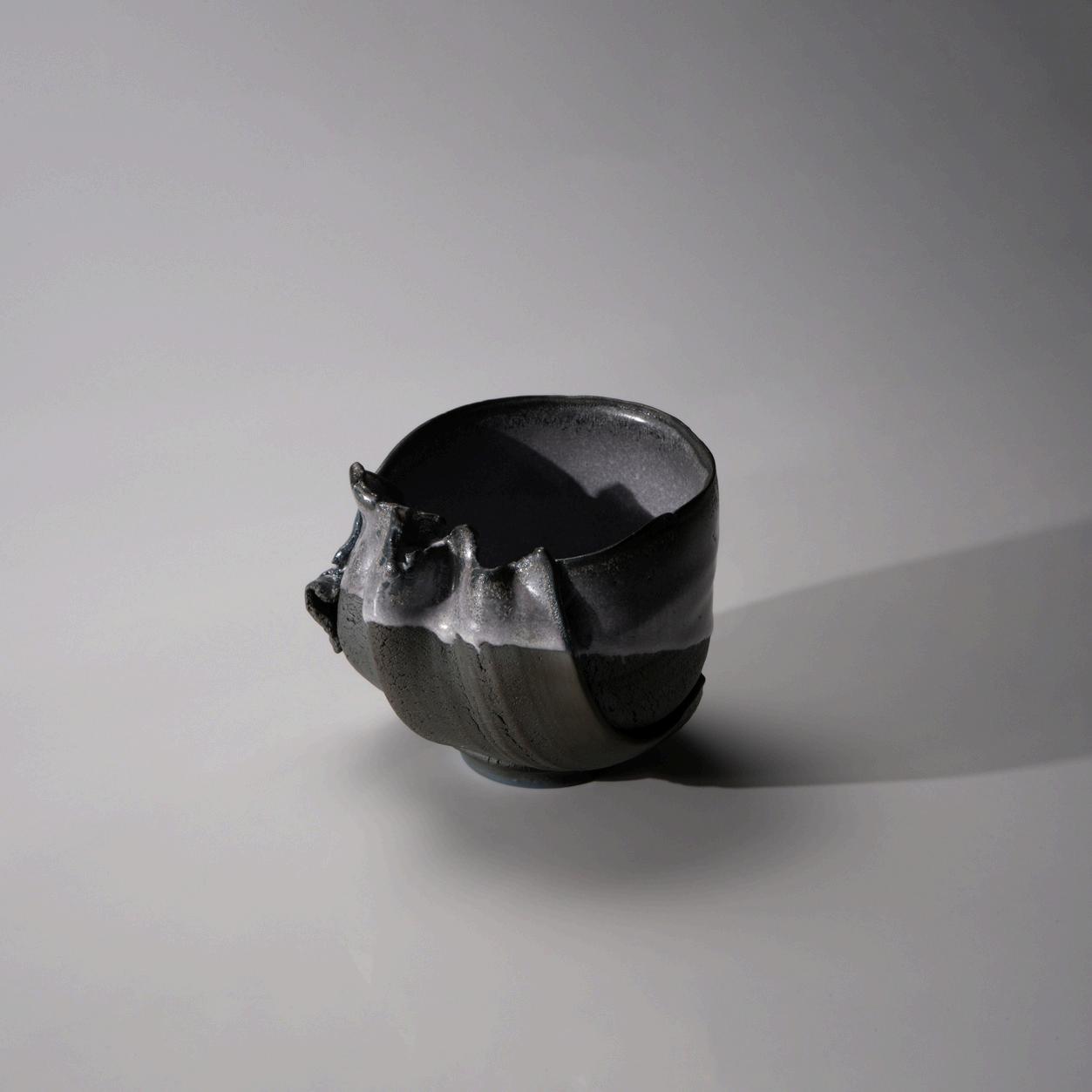

5 Kato Mami 加藤 真美 Bowl, Gekka (Beneath the Moon), 2025
6 Kato Mami 加藤 真美 Bowl, "Shizuka," 2025
7 Kato Mami 加藤真美 Frost glazed purple tea bowl , 2025
8 Kato Mami 加藤真美 Jingdezhen Tea bowl, 2025


10

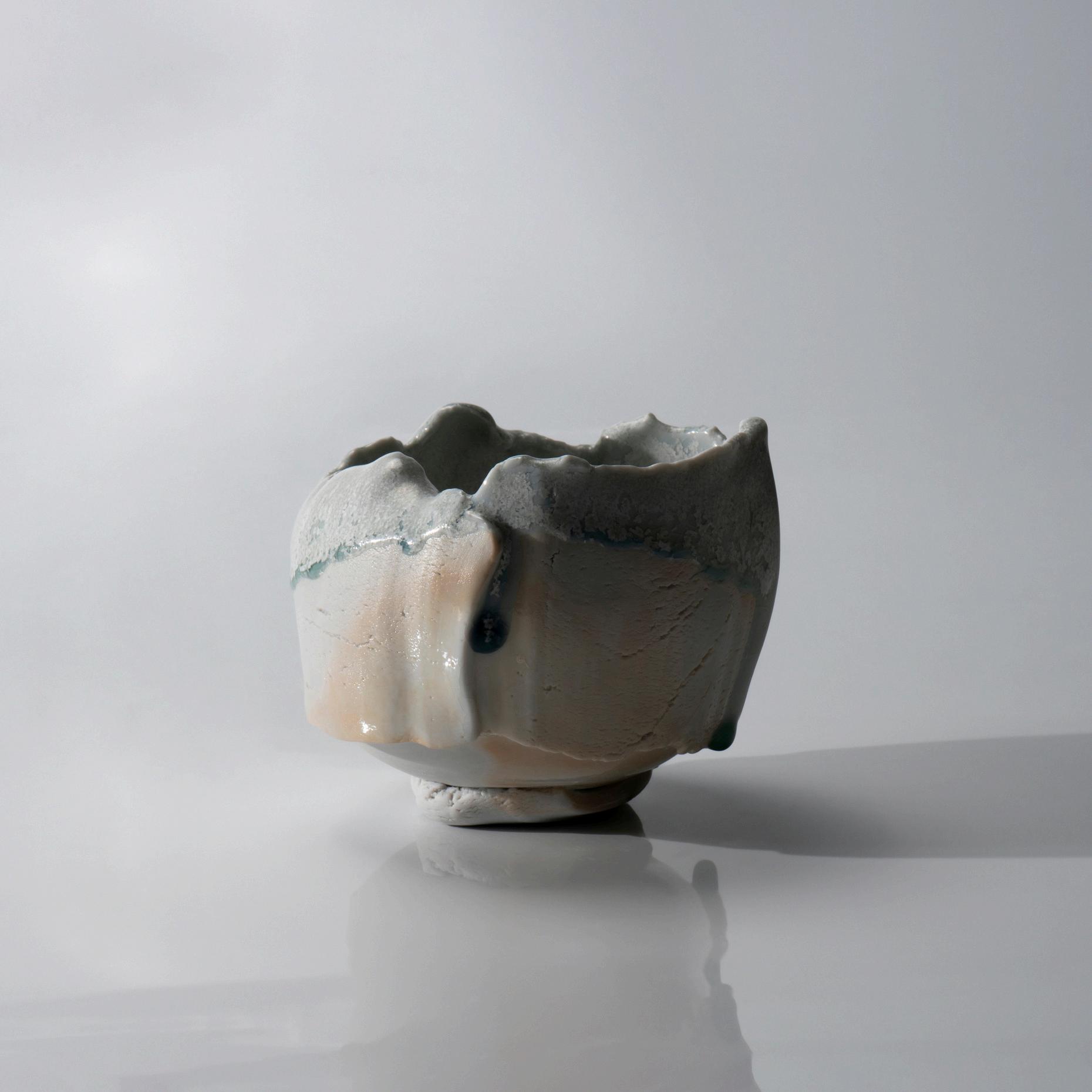
12
With signed wood box, Seto porcelain, (h) 7.6 × (diameter) 12.8 cm
With signed wood box, Seto porcelain, (h) 103 × (w) 12 × (d) 133 cm
With signed wood box, Seto porcelain, (h) 85 × (diameter) 119 cm
With signed wood box, Seto porcelain, (h) 11 × (w) 13 cm
9 Kato Mami 加藤 真美
Frost glazed tea bowl (white), 2025
Kato Mami 加藤 真美 Frost glazed tea bowl
11 Kato Mami 加藤 真美 Tea bowl "Himuro," 2025
Kato Mami 加藤 真美 Tea bowl, “Konohana” 2, 2025
With signed wood box, stoneware, (h) 20 × (w) 28 × (d) 235 cm
With signed wood box, Seto porcelain, (h) 15 × (w) 20 × (d) 23 cm
With signed wood box, Seto porcelain, (h) 10 × (w) 22 × (d) 20 cm
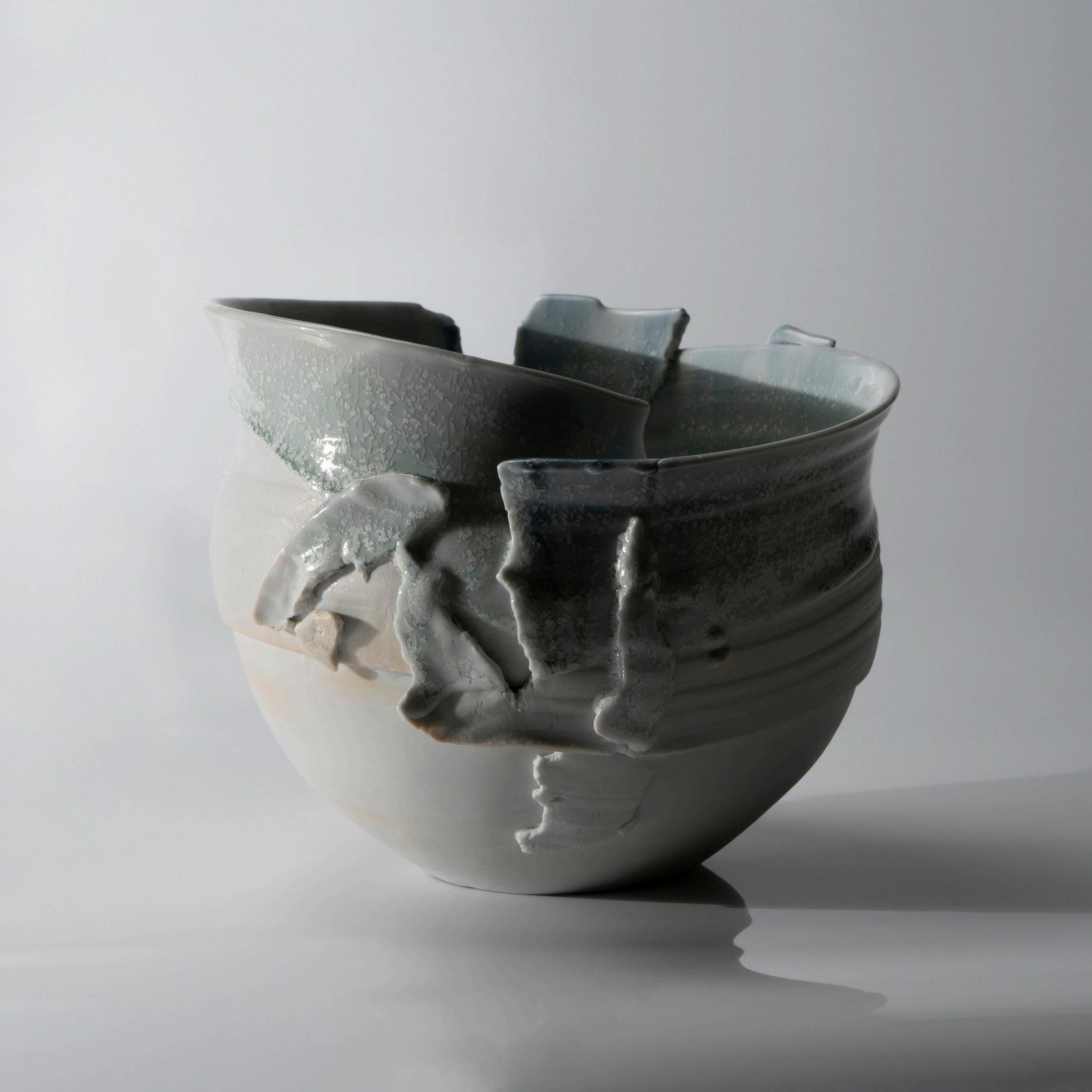
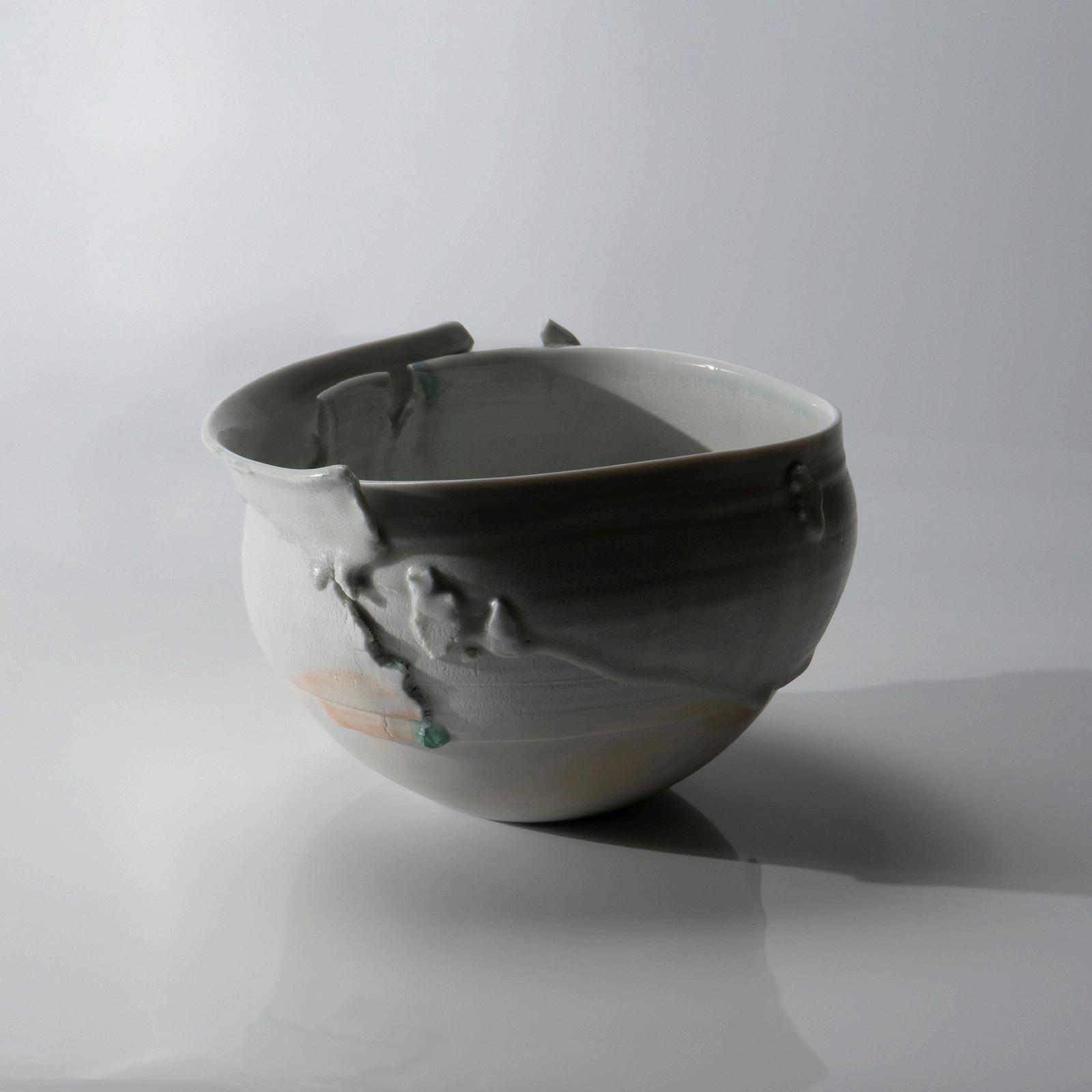

With signed wood box, stoneware, (h) 295 × (w) 23 × (d) 22 cm
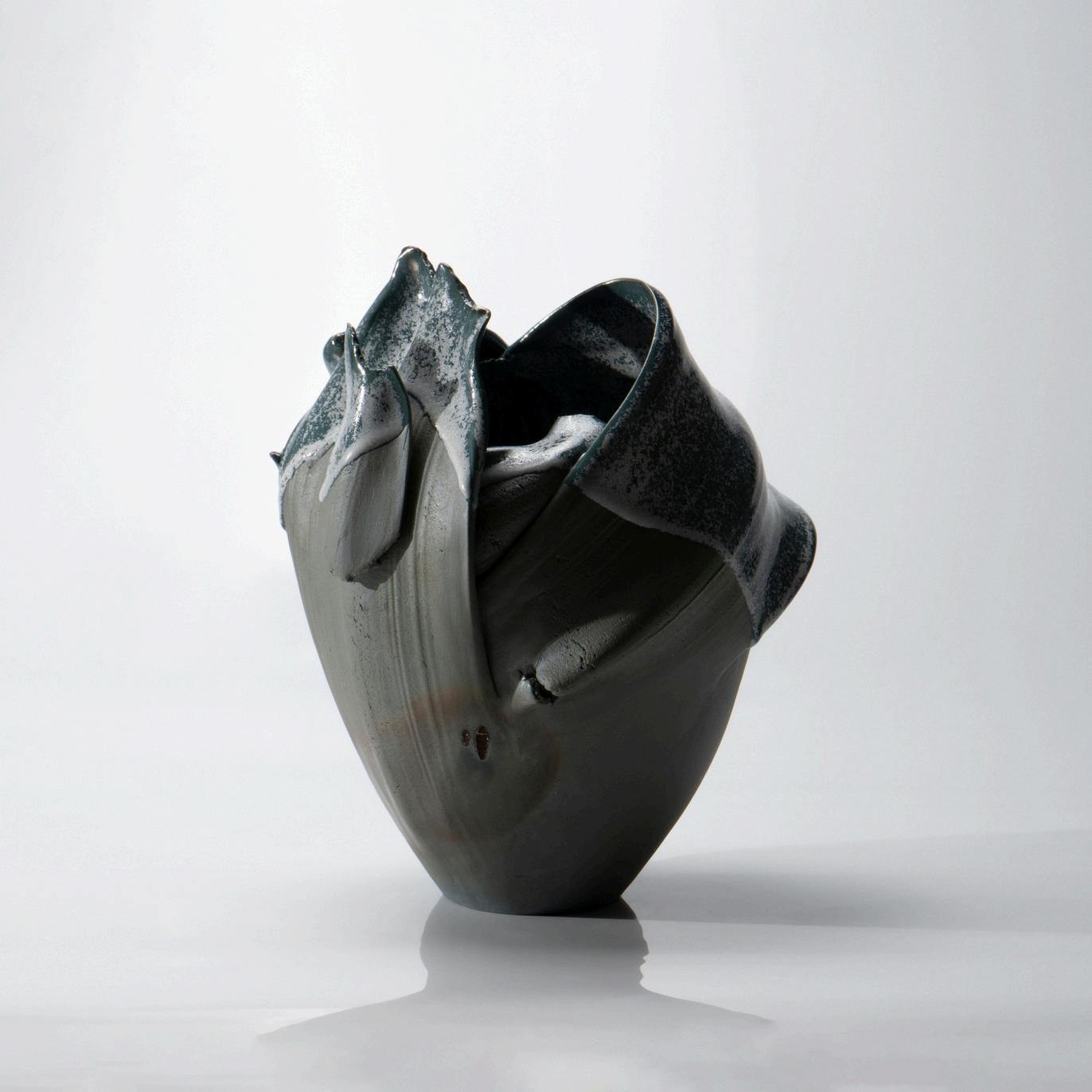
13 Kato Mami 加藤 真美 Gekka 3 (Beneath the Moon), 2025
14 Kato Mami 加藤 真美 Bowl, "Suimei," 2025
15 Kato Mami 加藤 真美 Frost glazed bowl, 2025
16 Kato Mami 加藤 真美 Tsukuyomi, 2025

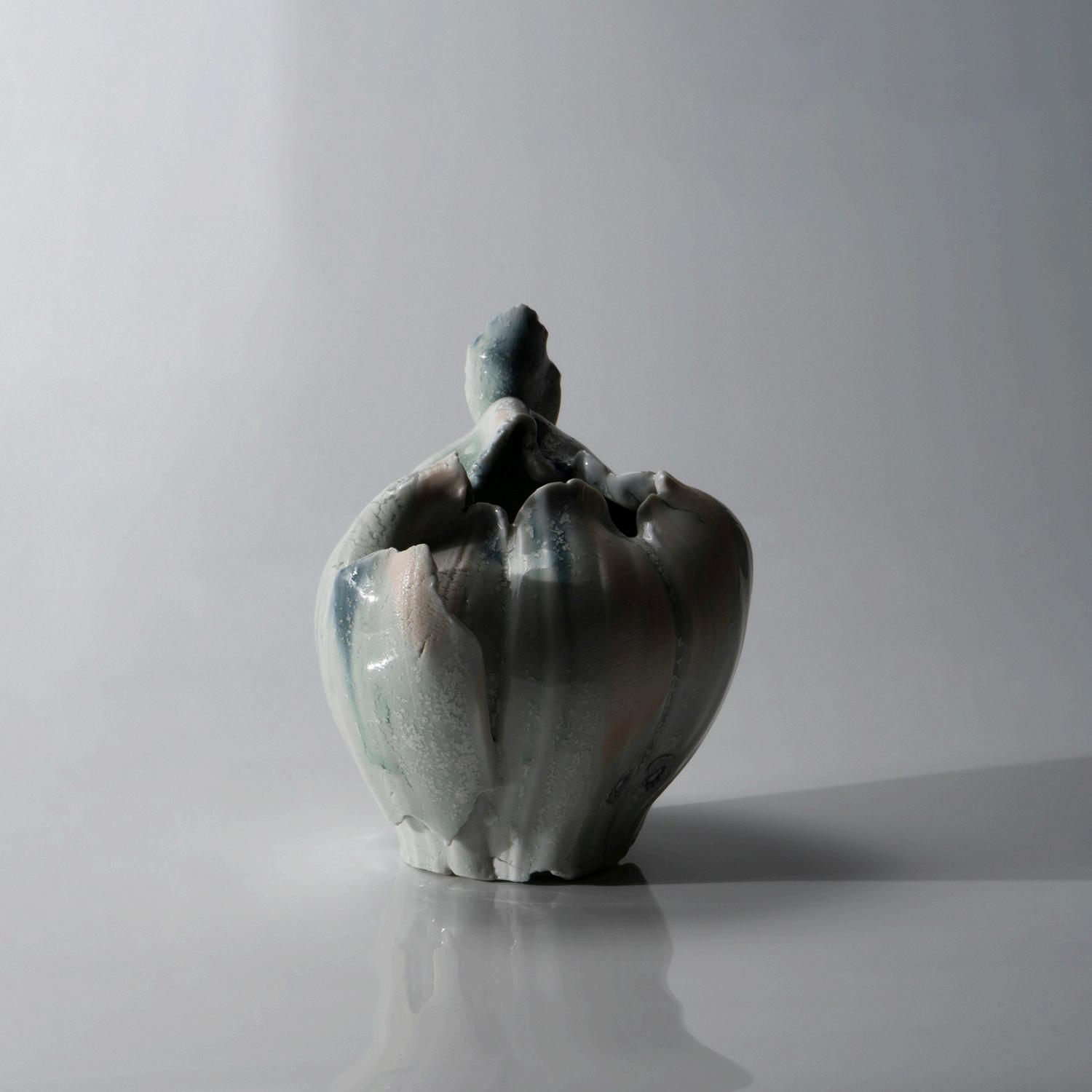
o Mami 加藤 真美
4 (Beneath the Moon), 2025
With signed wood box, Seto porcelain, (h) 26 × (w) 29 × (d) 26 cm
18 Kato Mami 加藤 真美
Small flower vase , 2025
With signed wood box, Seto porcelain, (h) 168 × (w) 135 × (d) 15 cm
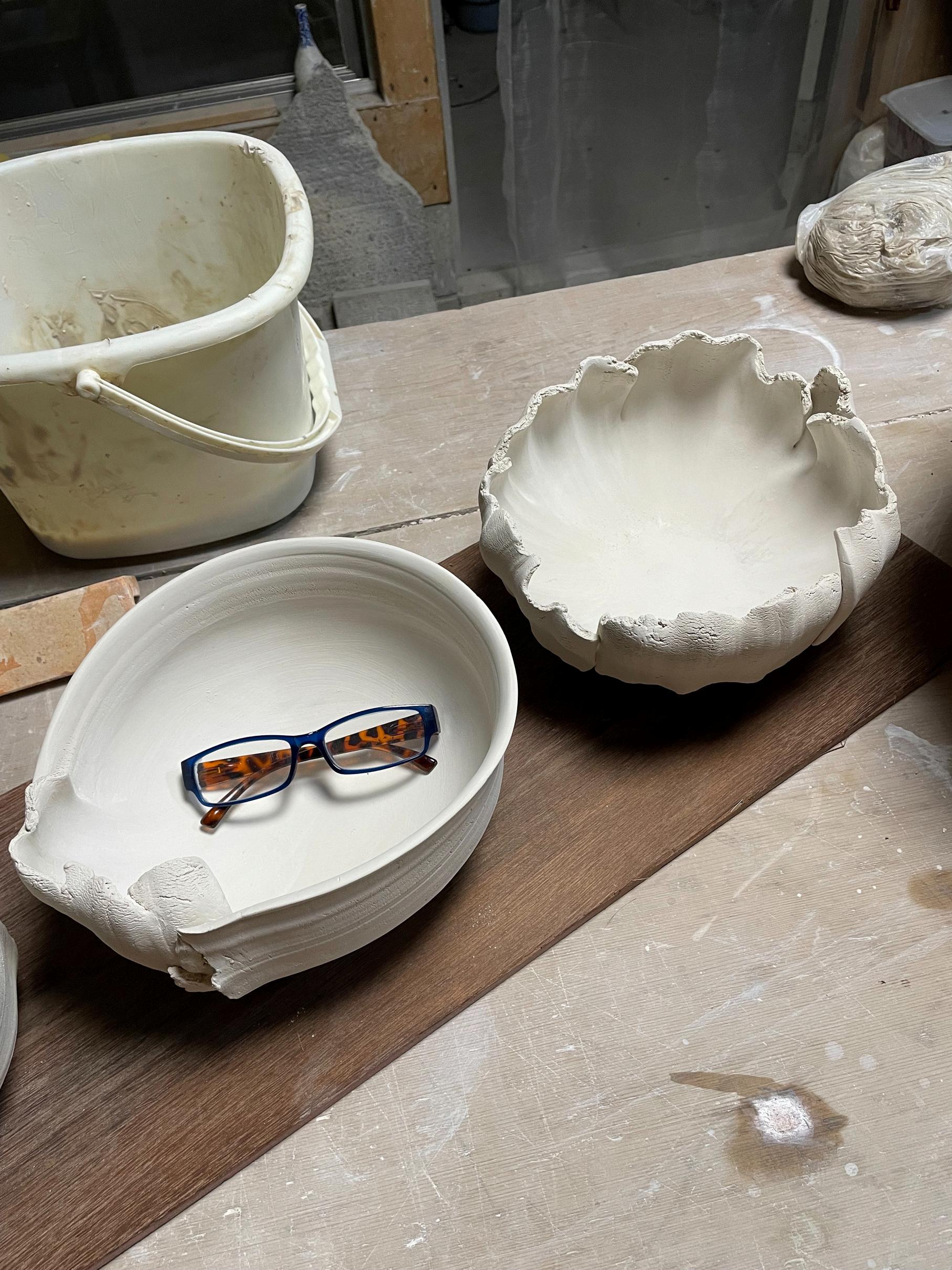

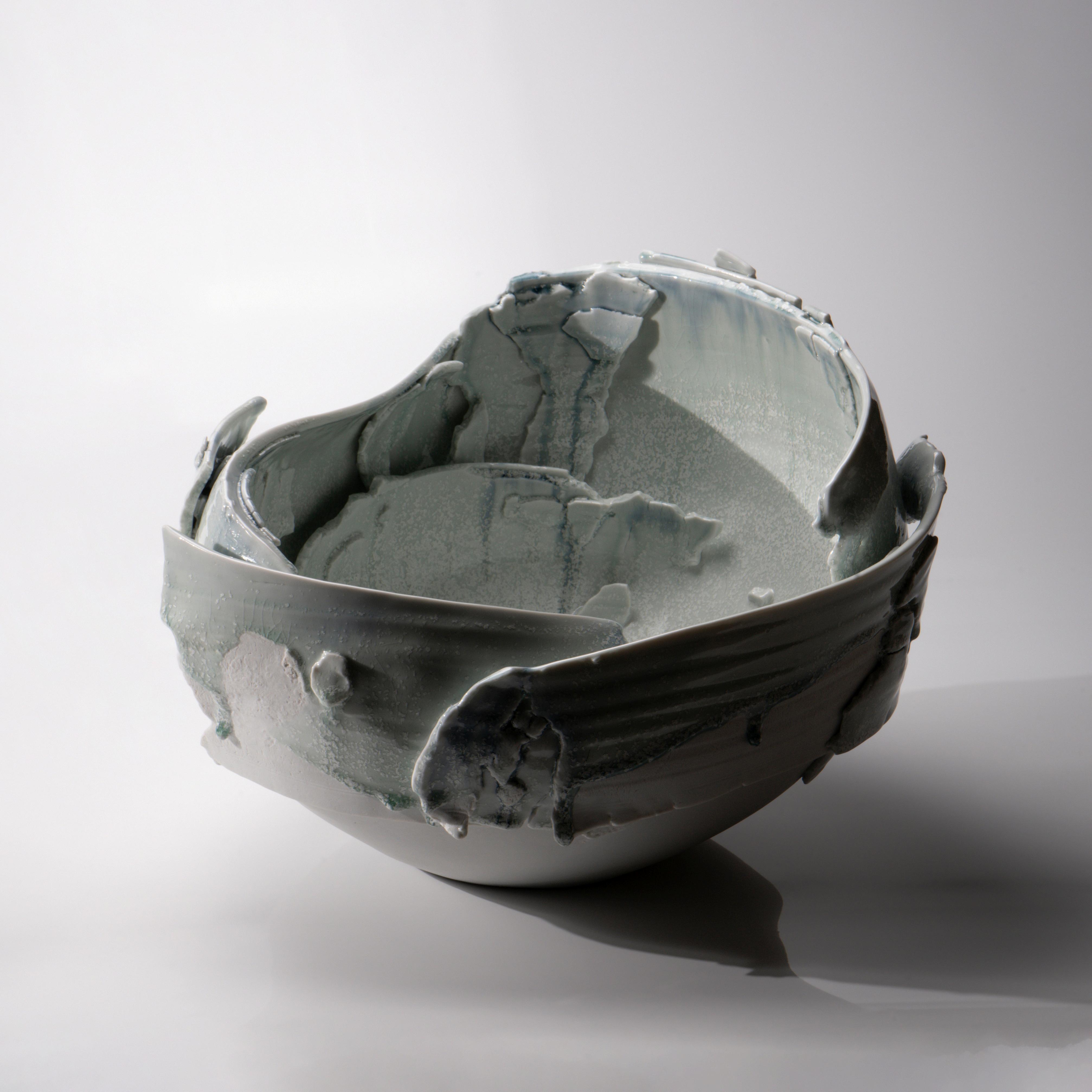
ARTIST BIOGRAPHY
KATO MAMI 加 藤 真 美 (B.1963)
1963 Born in Tokai City, Aichi
1984 Entered Tokoname Ceramic Art Research Institute
1986 Completed from Tokoname Ceramic Art Research Institute
1987 Received the New Artist Prize in the Avant-Garde Division at the 16th Chōza Award
1988 Built a kiln and became independent
1994 Worked in Gyeongju, Korea, and trained in local traditional techniques
1997 Participated in “Interchange 97”
Organized and participated in work shop in Tokoname, Brno, Czech
Planning and participation
1999 The 6th Cesky Porcelan International Mug
Participated in the 6th Cesky Porcelan International Mug Symposium, Czech, The design was adopted
2013 Participated in "Le Carrousel des metiers d' Art et de Creation", France
Received the Special Jury Prize at the 31st Chōza Award Ceramic Art Exhibition, Japan, selected by Koie Ryoji
NHK Kyoto Broadcasting Station Prize, 47th Women's Ceramic Art Exhibition
2014 Shoroku Prize, 21st Shoroku Prize Chawan Exhibition
Participated in workshop and exhibition “Tokoname-Agost” at Museo de Alfareria de Agost, Spain
2015 The 42nd Mino Ceramic Art Exhibition, Chunichi Prize
2016 Silver Prize, Ceramica Multiplex 2016, Croatia
Hagi Grand Prize IV, Honorable Mention Award
Participated in “International Travelling Porcelain Exhibition”, Netherlands, Czech Republic, Belgium
2017 Solo Exhibition “Moon Light” at New Taipei City Yingge Ceramics Museum, Taiwan
Invited Artist in Residence, Art Ichol, India
Exhibited "Contemporary Tea Ceremony Ceramics" and "Evolving Porcelain" at the Ibaraki Ceramic Art Museum, Ibaraki, Japan
2018 Solo Exhibition “Moon Light” at Tokai Art Theater, Japan
Installation Earth Pots at Museo Etnografico de Castilla y Leon, Spain
Grand Prize, 44th Mino Ceramic Art Exhibition
2019 Grand Prize, The 44th Mino Ceramics Exhibition, Japan
2020 Invited artist, Global Art Festival 2020 in Gujarat, India
Invited exhibitor, VIII International Marratxi Ceramic Biennial, Spain
Began serving as a juror for the Aichi Prefecture Arts Federation Exhibition
2021 Invited exhibitor, “POTs” at the National Gallery, Thailand
Exhibited in “MINO 100 Chawan” at Tōshin Mino Ceramic Art Museum, Gifu
2022 Exhibited at “Masterpiece London”, UK
2023 60th Anniversary Commemorative Prize, 46th Mino Ceramic Art Exhibition
2024 Grand Prize, 28th Mino Chawan Exhibition
Second Prize, 18th Paramita Ceramic Grand Prize
2025 Awarded the Satoko Prize, Mino Ceramic Association
Invited to “The River of Time” –– Exhibition of Japanese Modern Ceramics Masters, Jingdezhen, China.
CONCURRENTLY
Conducting workshops and lectures internationally, promoting cultural exchange
Teaching at Aichi University of the Arts and the Tokoname Ceramic Art Institute
WORKS IN SELECTED PUBLIC COLLECTIONS
The Clay Studio, USA
Ceramini Contemporary Ceramics Museum, Turkey
Kizankan Foundation, Nagano, Japan
Museo de Alfareria de Agost, Spain
Mino Ceramic Art Museum, Tajimi, Japan
Shanghai Art and Craft Museum, China
Kerameikon, Croatia
Museu de Ceramica de Manises, Spain
Ibaraki Ceramic Art Museum, Japan
Art Ichol, India
New Taipei City Yingge Ceramics Museum, Taiwan
Dankook University International Ceramic Cultural Exchange Center, Korea
Tōshin Mino Ceramic Art Museum, Gifu, Japan
Museo Etnografico de Castilla y Leon, Spain
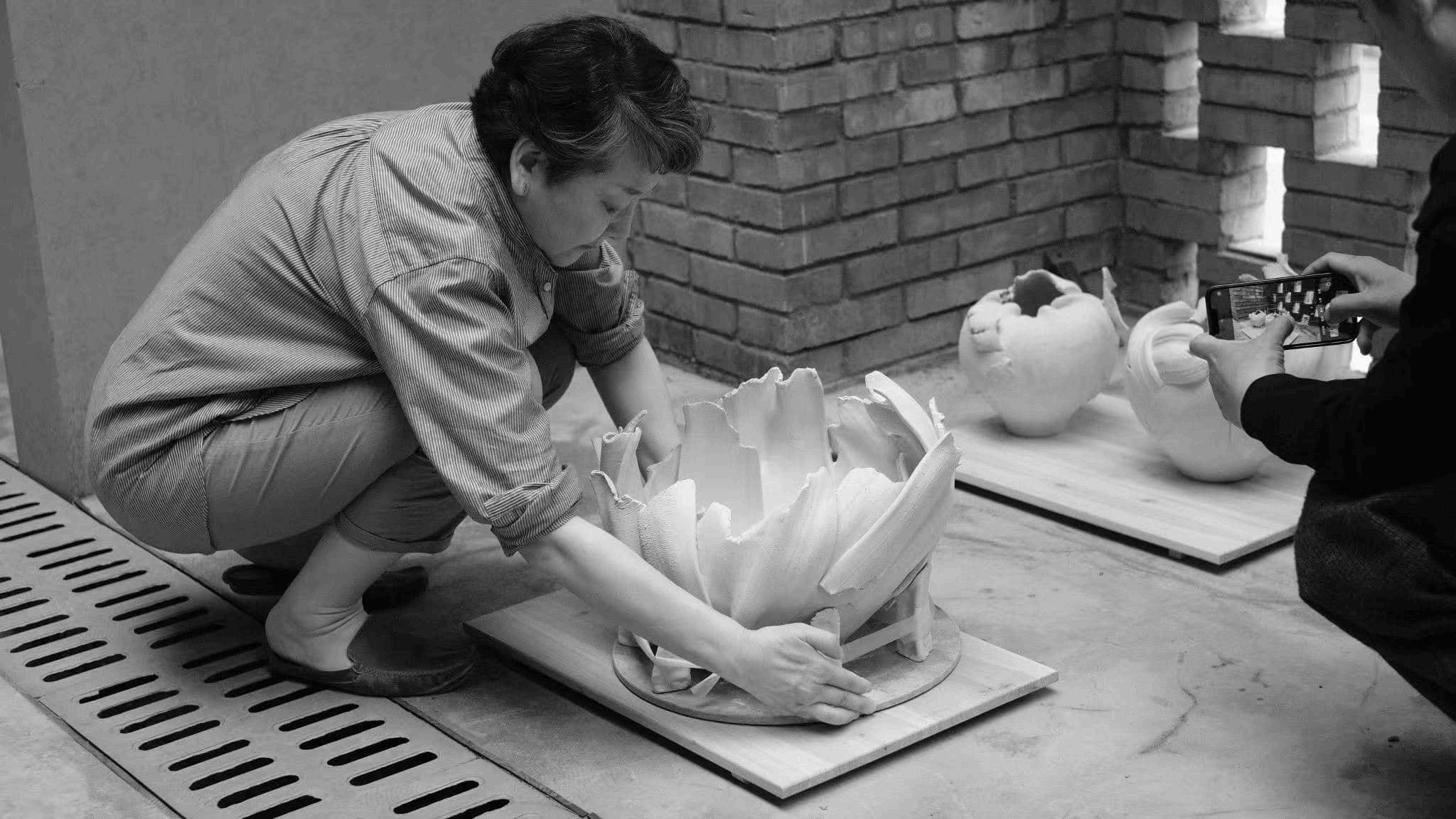
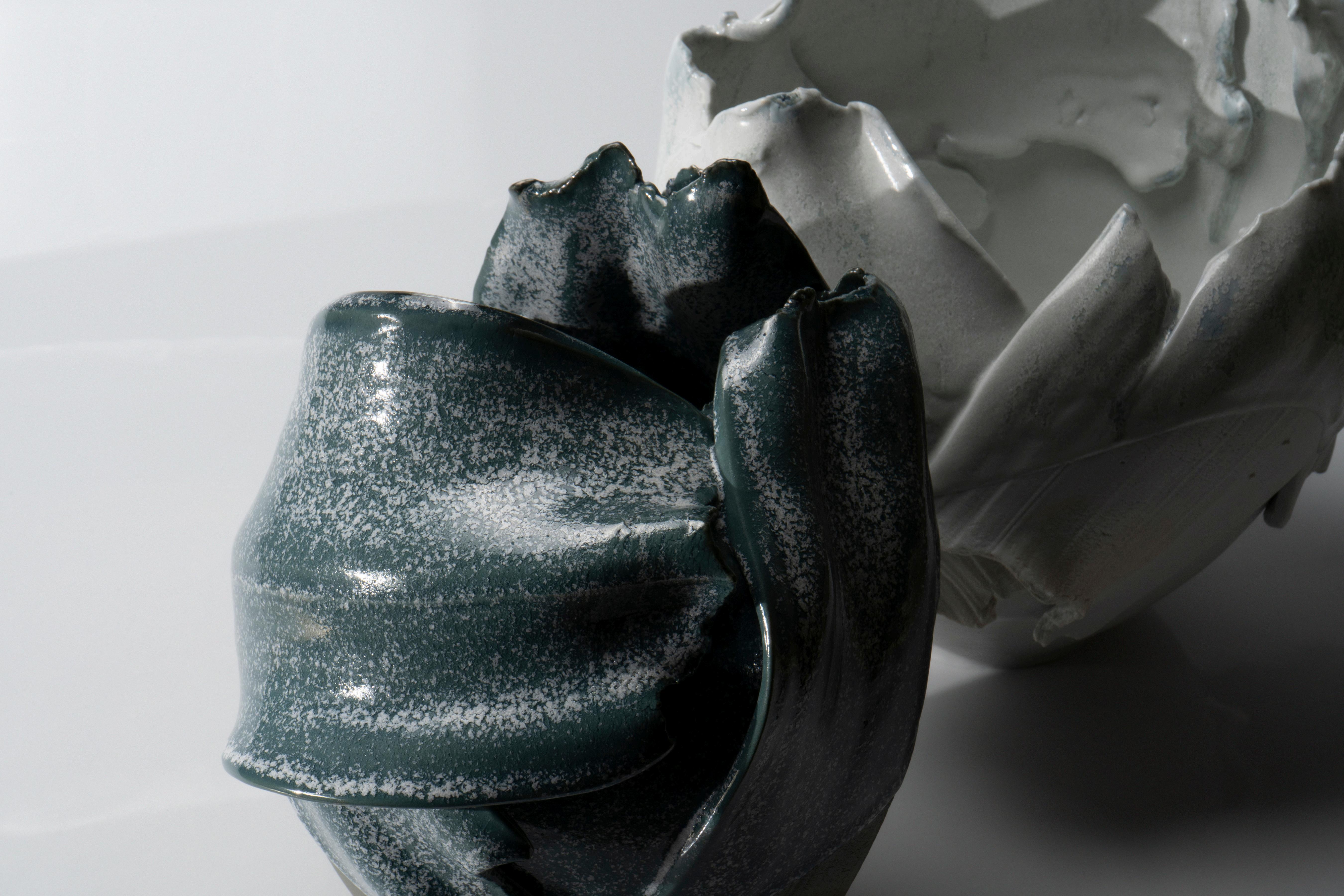
Silent Earth: Contemporary ceramics by Kato Mami | Exhibition catalog
Curator and Director: Beatrice Chang
Authors: Kato Mami, Kristie Lui, Haruka Miyazaki, Naomi Saito
Photography: Yoriko Kuzumi and Taoxichuan Art Centre, Jingdezhen China
Additional project support: Ichiho Nishiki
This catalog includes several contributing comments courtesy of: Kenji Kaneko, concurrently: Director Ibaraki Ceramic Art Museum; Director, Tōshin Mino Ceramic Art Museum; Principal, Ibaraki Prefectural Kasama Ceramic School, Director, Bizen City Art Museum
Kato Mami, ceramic artist.
Mino Ceramic Art Association’s Chairman Ando.
Mino Chawan Exhibition & Mino Ceramic Art Association.
Ishizaki Yasuyuki, Director, Museum of Modern Ceramic Art, Gifu.
On view: October 23 – November 6, 2025
ISBN 979-8-9985525-2-6
Published by Dai Ichi Arts, LTD. © All rights reserved.

